Returning from a long Twitter absence to brag about a cool thing! Thank you to @NIDCD, my wonderful mentors at @ChangLabUcsf, @NinaDronkers, @smwilsonau, and my mentors at @VUMCHearSpeech for your guidance and support throughout the F32 journey. Time to do some science! pic.twitter.com/iRNOjPhrqa
— Deborah Levy (@deb_f_levy) May 20, 2022
Episode 20 of the Language Neuroscience Podcast: a great conversation about cortical myeloarchitecture, tonotopy, and spectrally directed attention, and more, with my long time friend Fred Dick, Professor of Auditory Cognitive Neuroscience at Birkbeck.https://t.co/oFEeJ7jlM6
— Stephen Wilson (@smwilsonau) May 4, 2022
Excited to share what I consider the first paper of my dissertation work! "Identifying a brain network for musical rhythm: A functional neuroimaging meta-analysis and systematic review" in Neuroscience and Biobehavioral Reviews 1/14 https://t.co/a6HHnurmSN
— Anna Kasdan (@annakasdan) April 19, 2022
I'm delighted to share Episode 19 of the Language Neuroscience Podcast, with the brilliant Keith Josephs, discussing his groundbreaking work on the neuropathological underpinnings of progressive speech and language disorders. #ApraxiaOfSpeech @MayoClinic https://t.co/WOuW1oGeRf
— Stephen Wilson (@smwilsonau) February 22, 2022
I'm delighted to share Episode 18 of the Language Neuroscience Podcast, for end-of-the-year holiday listening. My guest is the brilliant & charming pioneer & leader of our field, Cathy Price. Hope you'll enjoy it as much as I did. @PLORASResearch @WCHN_UCLhttps://t.co/kL6J0U0k4U
— Stephen Wilson (@smwilsonau) December 27, 2021
Thrilled to share Episode 17 of the Language Neuroscience Podcast with the legendary Elissa Newport. We talk about language development, and especially language outcomes in kids with perinatal stroke. Thanks @marcia_petyt for transcription!https://t.co/etvq4DNw6S
— Stephen Wilson (@smwilsonau) November 23, 2021
#SNL2021 watch party with language neuroscience lab members @MarianneCasilio and @sarahmschneck. With coffee and croissants... pic.twitter.com/oHW90nbhKO
— Stephen Wilson (@smwilsonau) October 5, 2021
Language Neuroscience Podcast #16, I talk with @CoryShain about his fascinating new preprint on working memory demand in naturalistic language comprehension. Get yourself in the mood for @SNLmtg this week! @ev_fedorenko @IbanDlank @LanguageMIThttps://t.co/Yu8xrZbP8L
— Stephen Wilson (@smwilsonau) October 4, 2021
Thank you @smwilsonau for hosting me on the brilliant Language Neuroscience podcast!
— Rodrigo Braga (@RodBraga) September 14, 2021
Thoroughly recommend y’all check out past & future episodes, whatever your level of interest in language 🧠 is! https://t.co/stfZwaKsZg
Language Neuroscience Podcast Episode 15: A really interesting chat with @RodBraga about his fascinating paper identifying the language network from resting state functional connectivity and situating it with respect to associated networks.https://t.co/TpZRZptF26
— Stephen Wilson (@smwilsonau) September 14, 2021
seems like grants are only truly official these days when a screenshot is posted. So excited to have received a F31 from @NIDCD for my dissertation project, and on the first try! I recommend finding yourselves fantastic mentors like @CrunchyNeuroSci and @smwilsonau. pic.twitter.com/PPbghzub4j
— Anna Kasdan (@annakasdan) August 26, 2021
Language Neuroscience Podcast #14: I talk with Ina Bornkessel-Schlesewsky @ibsneuro about her fascinating work on "neurotypology" (how the brain processes morphosyntactic information in diverse languages), predictive coding, and dorsal and ventral streams.https://t.co/hx0C2gcTpK
— Stephen Wilson (@smwilsonau) August 24, 2021
I'm excited & honored to be voted onto the board of the Society for the Neurobiology of Language, as Program Committee Chair-Elect. Thanks to all who voted! Looking forward to working with the fantastic scientists on the board & can't wait to plan the 2023 @SNLmtg in Marseille! pic.twitter.com/5lQLThOWCn
— Stephen Wilson (@smwilsonau) August 11, 2021
We're hiring! Cluster hire for 3 Asst. Profs in Psychology, open area (see thread). The goal is to increase our commitment to diversity, equity, and inclusion. @lkfazio and I are chairing to search so reach out if you have questions! https://t.co/3wHGJ5qKyJ
— Duane Watson (@duane_g_watson) August 9, 2021
Language Neuroscience Podcast #13: I talk with David Moses & Jessie Liu about their amazing paper decoding intended speech from the brain of a speaker with anarthria via an implanted electrode array. @AtDavidMoses @SeanMetzger5 @jessierliu @ChangLabUcsf https://t.co/7F92MaQPHC
— Stephen Wilson (@smwilsonau) August 6, 2021
@DrRoyHamilton was featured on @smwilsonau's Language Neuroscience Podcast. Listen to them discuss how #neuromodulation techniques can enhance #aphasia recovery. https://t.co/lCifmig7q3
— MRRI (@MossResearch) July 21, 2021
https://t.co/EMj3uscFU9
Join my lab in Nashville?! I'm looking for a dedicated, intellectually curious #SLP with great interpersonal skills to play a lead & long-term role on our NIH-funded study on neural basis of recovery from aphasia after stroke.
— Stephen Wilson (@smwilsonau) July 19, 2021
Please retweet!
Details here:https://t.co/n9IUmZ5vpa
I'm glad to have been nominated for the position of @SNLmtg Program Committee Chair. I am passionate about the field of language neuroscience and would be thrilled to contribute to planning our annual meetings. If you're a member, I'd appreciate your vote!https://t.co/R5WjXYcMwU
— Stephen Wilson (@smwilsonau) July 16, 2021
Language Neuroscience Podcast Episode 12: a great conversation with my old friend @DrRoyHamilton about TMS, TDCS, their applications in cognitive neuroscience & aphasia, & more! @PennbrainSTIM @PennMedLCNShttps://t.co/WPBdlP4afD
— Stephen Wilson (@smwilsonau) July 14, 2021
BIG CONGRATS 🎉 to Dr. Deb Levy on successfully passing her dissertation defense: "Multivariate Lesion Symptom Mapping for Predicting Trajectories of Recovery from #Aphasia." We wish @deb_f_levy the very best as a post doc fellow at UC San Francisco. @smwilsonau @VUHearSpeechPhD pic.twitter.com/mDpWHXPnP4
— VUHearingSpeechPhD (@VUHearSpeechPhD) July 7, 2021
My guest on the Language Neuroscience Podcast #11 is the legendary Willem "Pim" Levelt @MPI_NL. On the history of the neuroscience of language. We go way beyond the old Broca/Wernicke story, 2 hours but trust me, fascinating to the very end! Don't miss it!https://t.co/RhtrF6Jk9l
— Stephen Wilson (@smwilsonau) June 22, 2021
On Episode 10 of the Language Neuroscience Podcast, I have a great conversation with Pascale Tremblay @PascaleT07 about her paper "Broca & Wernicke are dead" (with co-author @anthonystevend), her role in founding @SNLmtg, and language tracts of the brain.https://t.co/TZgOwEbaTF
— Stephen Wilson (@smwilsonau) June 8, 2021
How to log into eRA Commons. https://t.co/gtvvqxjln8
— Stephen Wilson (@smwilsonau) May 29, 2021
Episode 9 of the Language Neuroscience Podcast: A discussion of some of our favorite presentations of the Clinical Aphasiology Conference 2021 with Maya Henry @utaphasialabs, Andrew Demarco, and Sarah Schneck @sarahmschneck. #CAC2021 #aphasiahttps://t.co/BJUSmJ3o1k
— Stephen Wilson (@smwilsonau) May 25, 2021
On today's new episode of the Language Neuroscience Podcast (#8), a fascinating conversation with my good friend Julius Fridriksson @aphasia_lab about aphasia treatment and its neural mechanisms. Please listen and share! #aphasia #slphttps://t.co/Oi8jJwBpYE
— Stephen Wilson (@smwilsonau) May 5, 2021
I’m excited to share a new paper from my lab by Ian Quillen, Melodie Yen, and myself, just out in @jneurolang. #openaccess
— Stephen Wilson (@smwilsonau) April 26, 2021
"Distinct neural correlates of linguistic and non-linguistic demand"https://t.co/ZGSxkNK322 pic.twitter.com/51Q9ULF3qw
I've been really enjoying the Language Neuroscience podcast - Stephen is an excellent host, and the guests have been amazing. And I was very excited to talk about our recent @ox_bold fMRI study on the podcast! #DevLangDis https://t.co/dl4xfmDt8j
— Dr Saloni Krishnan (@salonikrishnan) April 23, 2021
Language Neuroscience Podcast #7: I talk with outstanding researcher Saloni Krishnan @salonikrishnan about her prize-winning paper with first findings from the @ox_bold study on developmental language disorder #DLD (with @kateewatkins, @deevybee, et al.).https://t.co/vflcfxbLS5
— Stephen Wilson (@smwilsonau) April 21, 2021
Episode 6 of the Language Neuroscience Podcast with the great Karen Emmorey @kemmorey1. By decoupling language from speech & hearing, the study of sign languages brings fascinating insights on the neural basis of language. Transcript included! #ASL https://t.co/5XwOyZ30zS pic.twitter.com/c0SXuvOaDg
— Stephen Wilson (@smwilsonau) April 7, 2021
Neuroplasticity in Post-Stroke Aphasia: A Systematic Review and Meta-Analysis of Functional Imaging Studies of Reorganization of Language Processing | https://t.co/QCtM8uCskZ | by @smwilsonau & @sarahmschneck pic.twitter.com/WkldEflpeJ
— Neurobiology of Language (@jneurolang) April 2, 2021
I'm pleased to share a new translation/adaptation of the Quick Aphasia Battery into Lebanese Arabic 🇱🇧, by Mohammad Wehbe. Freely available here:https://t.co/mbU3qcjCwL#slp #slpeeps #aphasia
— Stephen Wilson (@smwilsonau) March 26, 2021
Episode 5 of the Language Neuroscience Podcast is now up! A fascinating chat with @AGajardoVidal and Diego Lurca-Puls about their new paper making the case that damage to Broca's area doesn't cause long term expressive aphasia. @PLORASResearch #aphasia https://t.co/ZOfsAeX1Mp pic.twitter.com/KNeWz7jCrk
— Stephen Wilson (@smwilsonau) March 24, 2021
Episode 4 of the Language Neuroscience Podcast. Ever wondered about the role of neural oscillations & neural entrainment in speech & language? Well I have... so I invited the great @jonasobleser to come talk about it. I really enjoyed this conversation! https://t.co/vflcfxbLS5 pic.twitter.com/BPkruYV26E
— Stephen Wilson (@smwilsonau) March 9, 2021
No aphasia? After a substantial left temporal hemorrhage? Thrilled to share that our paper with functional neuroimaging findings of one way this is possible is out today in Neurocase! https://t.co/tR66Xf1xqB @smwilsonau @duffalab
— Sarah Schneck (@sarahmschneck) March 5, 2021
I'm excited to share Episode 3 of the Language Neuroscience Podcast, with guest Eddie Chang @ChangLabUcsf, UCSF neurosurgeon doing amazing speech perception and production research with ECoG.https://t.co/vflcfxbLS5 pic.twitter.com/fRwKOBLgb4
— Stephen Wilson (@smwilsonau) February 23, 2021
Walking my dog this morning... never seen Nashville like this before. pic.twitter.com/SBG2KLlpzi
— Stephen Wilson (@smwilsonau) February 18, 2021
Episode 2 of the Language Neuroscience Podcast is now available. My guest is the legendary neuroscientist Sophie Scott, CBE @sophiescott. We talk about the neurobiology of vocal communication and much more. Please listen, share, & subscribe! https://t.co/vflcfxbLS5 pic.twitter.com/pWtAiX6JjY
— Stephen Wilson (@smwilsonau) February 9, 2021
Here's a nice article in our med center newsletter about our Vanderbilt presurgical brain mapping team--@VickyLMorgan, @AllenTNewton, & myself. It's great to have the chance to apply what we've learned about brain/language to improving patient outcomes.https://t.co/4Wq1LmVJhE
— Stephen Wilson (@smwilsonau) February 4, 2021
Excited to share a new project: The Language Neuroscience Podcast. Aimed at scientists interested in the neural substrates of language (students/postdocs/faculty). Episode 1: my first guest is the brilliant @ev_fedorenko. Please listen, share, & subscribe! https://t.co/vflcfxbLS5 pic.twitter.com/dm88LEcbFk
— Stephen Wilson (@smwilsonau) January 28, 2021
Our systematic review and meta-analysis of fMRI/PET studies of neuroplasticity in post-stroke aphasia is now published in final form in @jneurolang (open access):https://t.co/MfaQYzopQT
— Stephen Wilson (@smwilsonau) January 5, 2021
See also our html version (hyperlinks are useful!):https://t.co/x1N7So37tA@sarahmschneck pic.twitter.com/qIC8ksDxTN
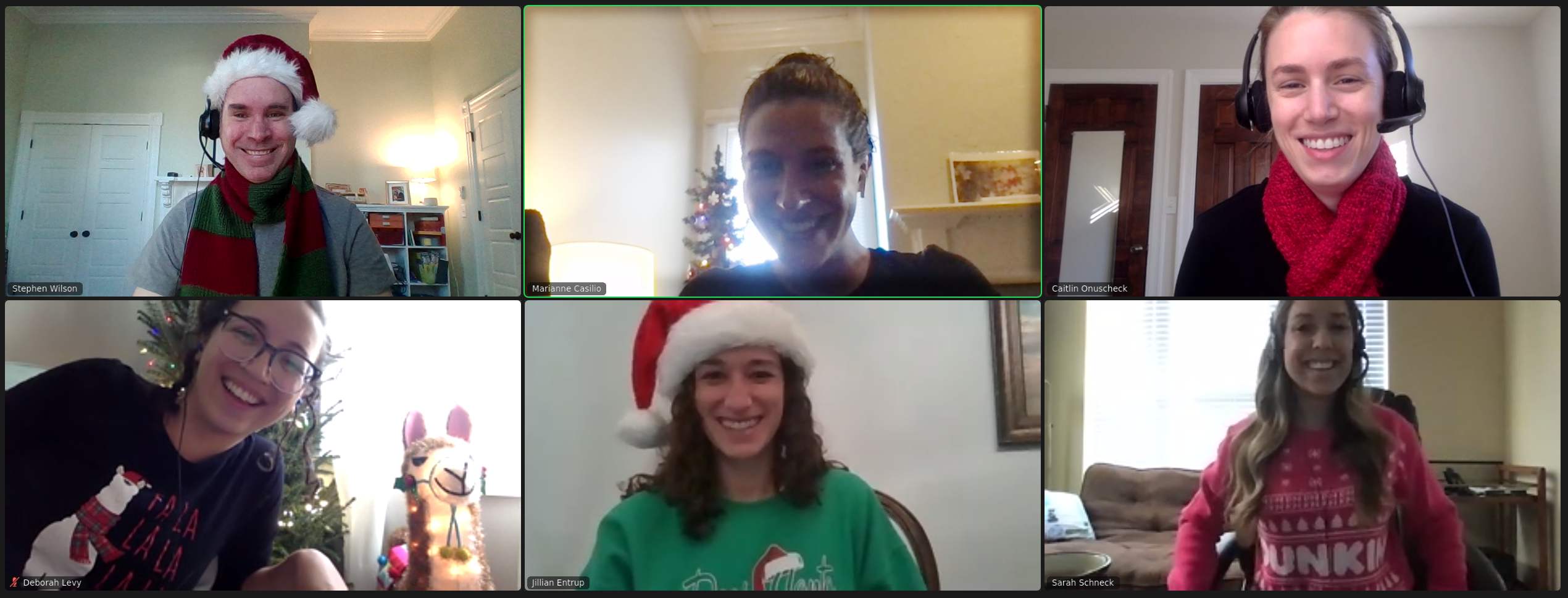 Our last consensus scoring meeting for the year was carried out with much festive spirit.
Our last consensus scoring meeting for the year was carried out with much festive spirit.
Aphasia evaluation over zoom? A version of the Quick Aphasia Battery (QAB) modified for remote administration is now available on our QAB website. The QAB is efficient, reliable, validated, and free!https://t.co/mbU3qcjCwL#slp #speechpathology #slpeeps #aphasia pic.twitter.com/Qt5RYeC5wo
— Stephen Wilson (@smwilsonau) November 12, 2020
Great story about a voter with aphasia: Sady Sayago. He is an awesome guy who has generously given his time to participate in several of our lab's studies! @VUMCHearSpeech @VUMChealth https://t.co/m2xm8YnEAy
— Stephen Wilson (@smwilsonau) October 29, 2020
Hope to see lots of neuro/language friends at @SNLmtg starting tomorrow! Here's what the Language Neuroscience Lab will be presenting... #SNL2020
— Stephen Wilson (@smwilsonau) October 20, 2020
We (@sarahmschneck & myself) have spent almost three years carrying out a systematic review & meta-analysis of the first quarter century of fMRI & PET studies of neuroplasticity in aphasia (1995-2020). To appear in @jneurolang. Please take a look!https://t.co/oTqrrADdLZ pic.twitter.com/lM9Mt3UQnv
— Stephen Wilson (@smwilsonau) September 16, 2020

Frozen Head State Park
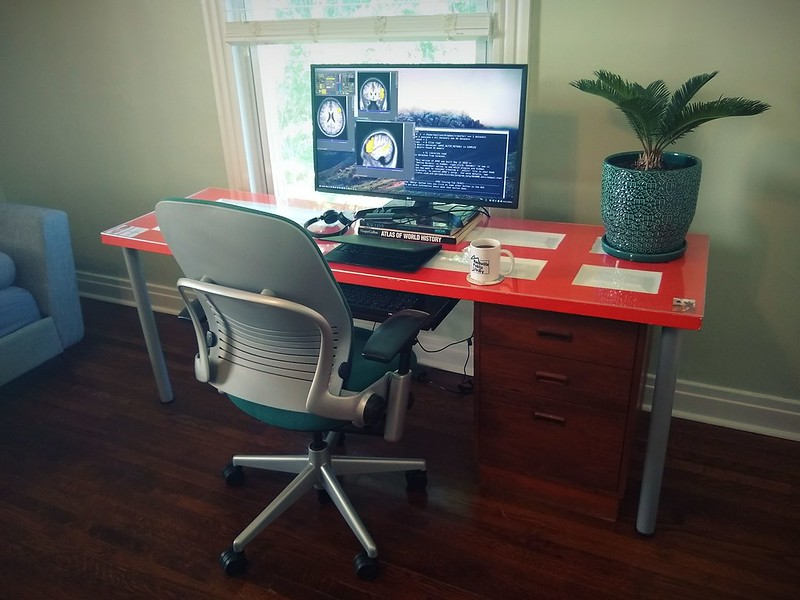
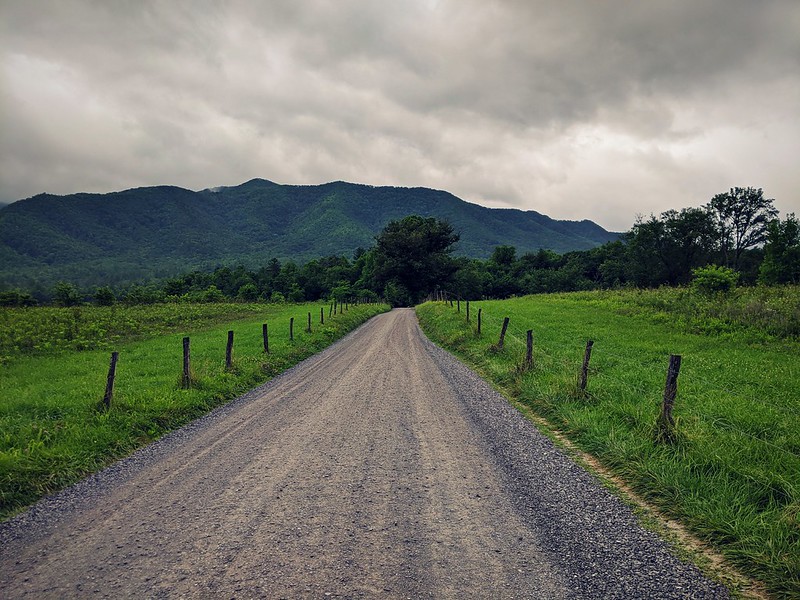
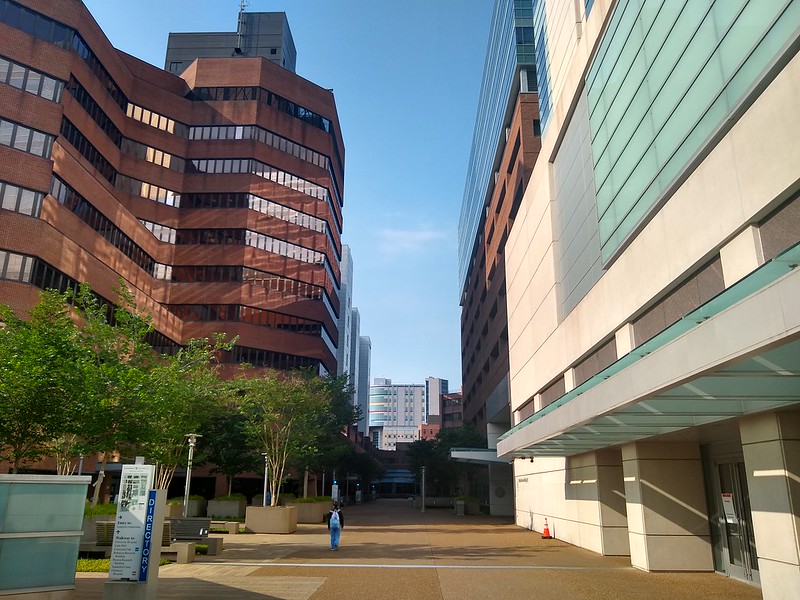
We are thrilled to share the news that our project R01 DC013270 ‘Neural correlates of recovery from aphasia after stroke’ has been funded by the National Institute on Deafness and Other Communication Disorders. This grant will support our work from June, 2020 to May, 2025.




Credits: Sharice Clough, Anna Kasdan, Leah Mann.
Here are the resources for further study related to our ASHA presentation ‘Using neuroimaging to inform assessment, patient education, and treatment planning in acute post-stroke aphasia’:
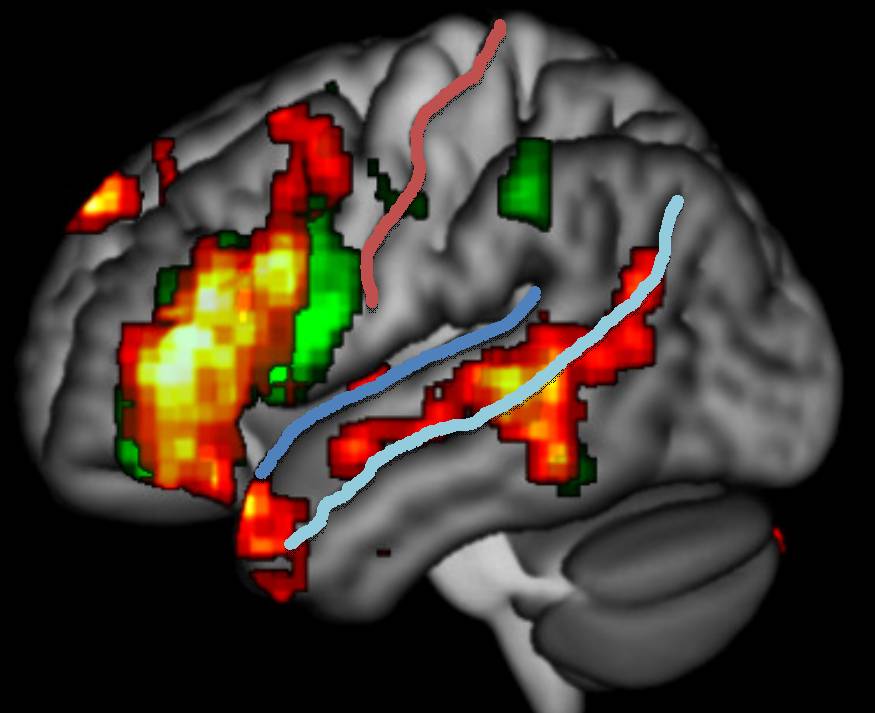
3D viewer including a template brain to explore
https://www.nitrc.org/projects/mricron
Labeled MRI slices (needs FLASH)
https://jhpmribrainatlas.rcc.uchicago.edu/node/2
Very nice “big picture” brain explorer
https://www.brainfacts.org/3D-Brain#intro=false&focus=Brain-cerebral_hemisphere-left
Explore 8 different brains in 3D
https://human.brain-map.org/mri_viewers/data
And here is the QAB page.
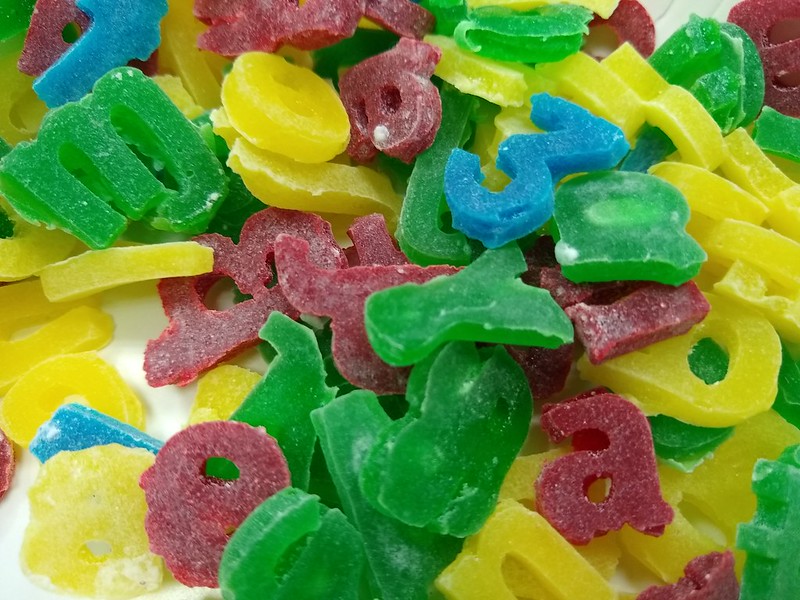
Credit: Deborah Levy.
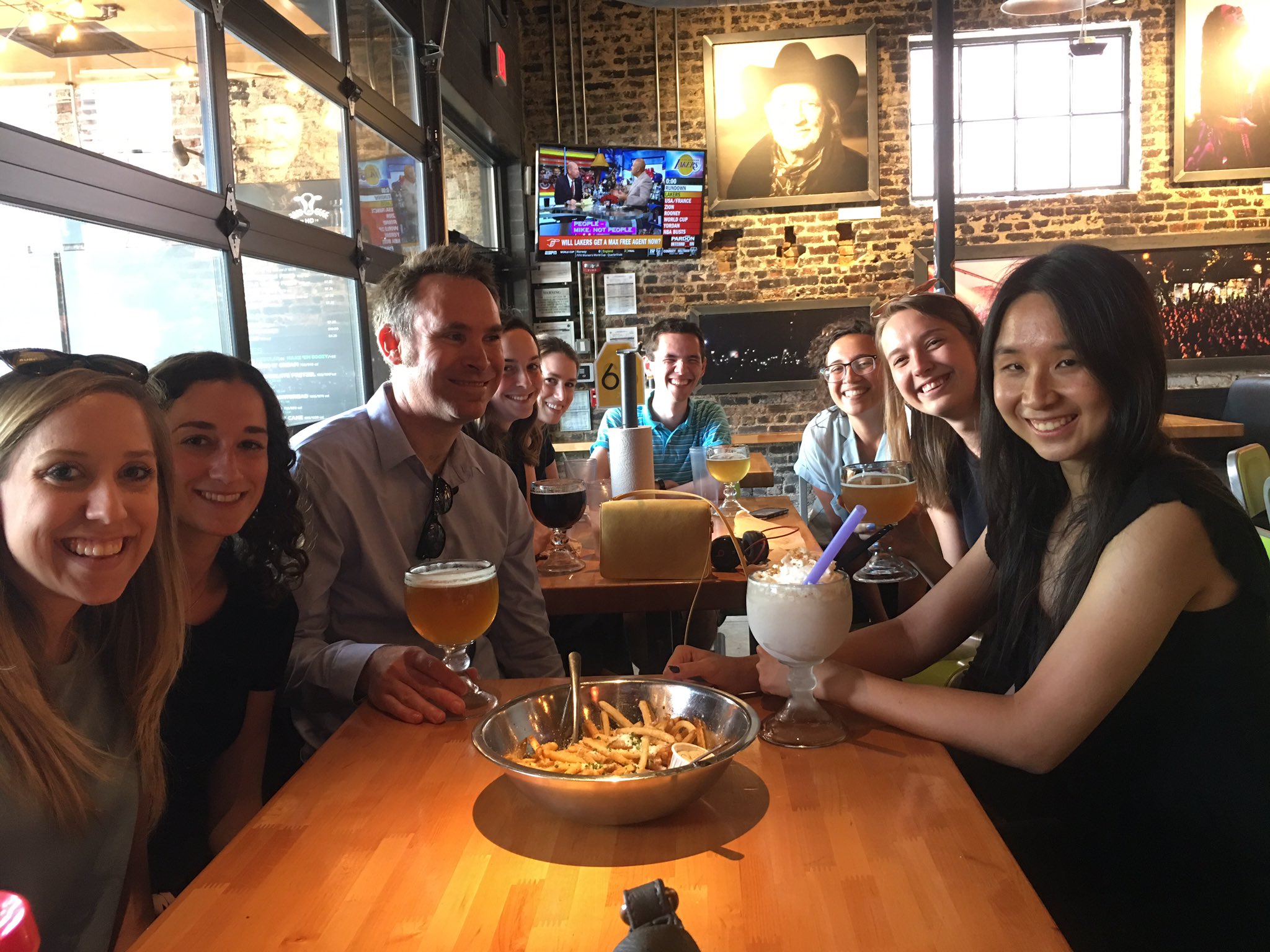
In this new paper, we used fMRI/MVPA to show that vowel representations even in primary auditory cortex (PAC) are shaped by a language-specific phonemic category boundary.
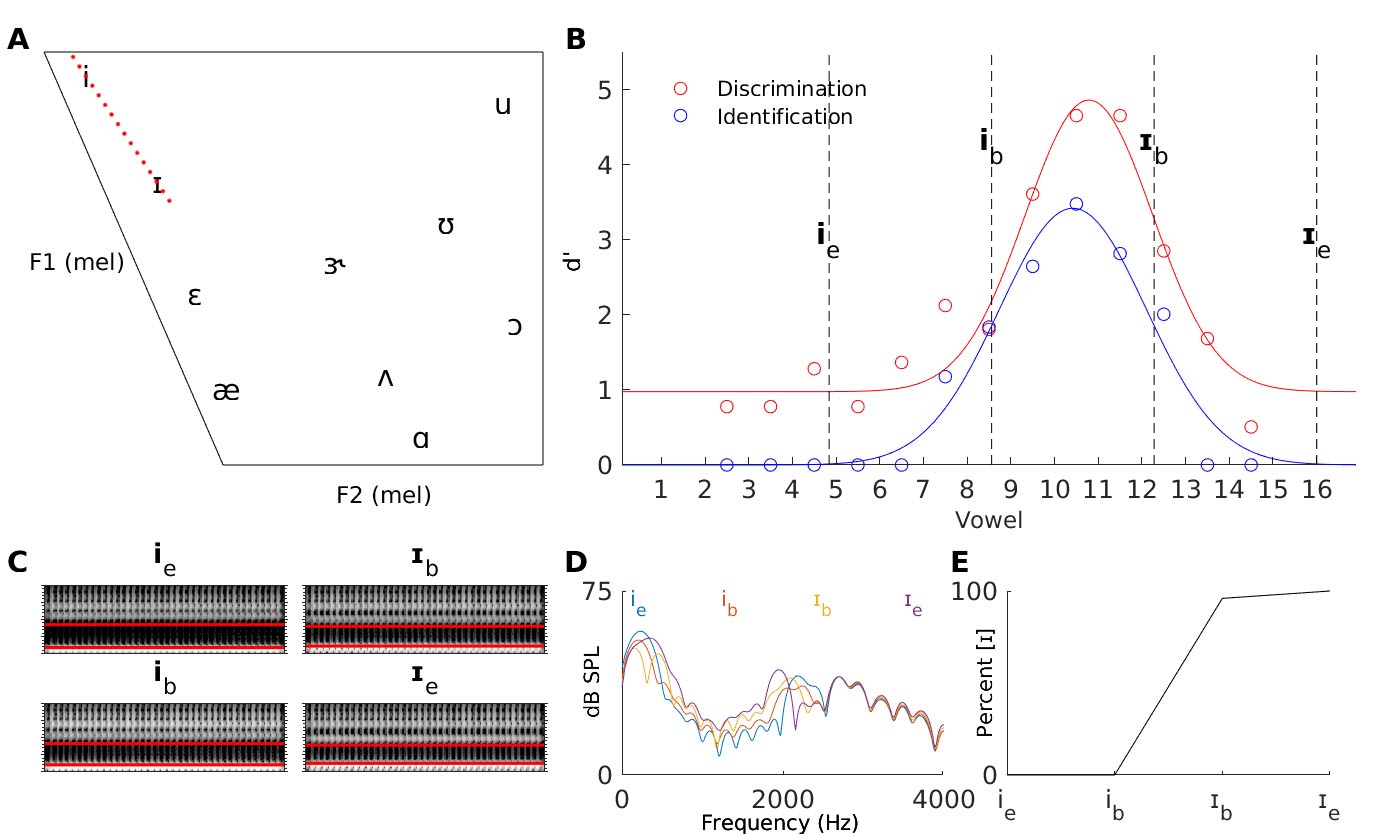
Levy DF, Wilson SM. Categorical encoding of vowels in primary auditory cortex. Cereb Cortex 2020; 30: 618-27. [pdf]
We describe a system for assessing connected speech in aphasia, based on the auditory-perceptual approach that is used in the assessment and diagnosis of motor speech disorders. We show that APROCSA is reliable and valid, and in our sample, explains 79% of the variance in connected speech profiles in terms of four latent factors: Paraphasia, Logopenia, Agrammatism, and Motor Speech.
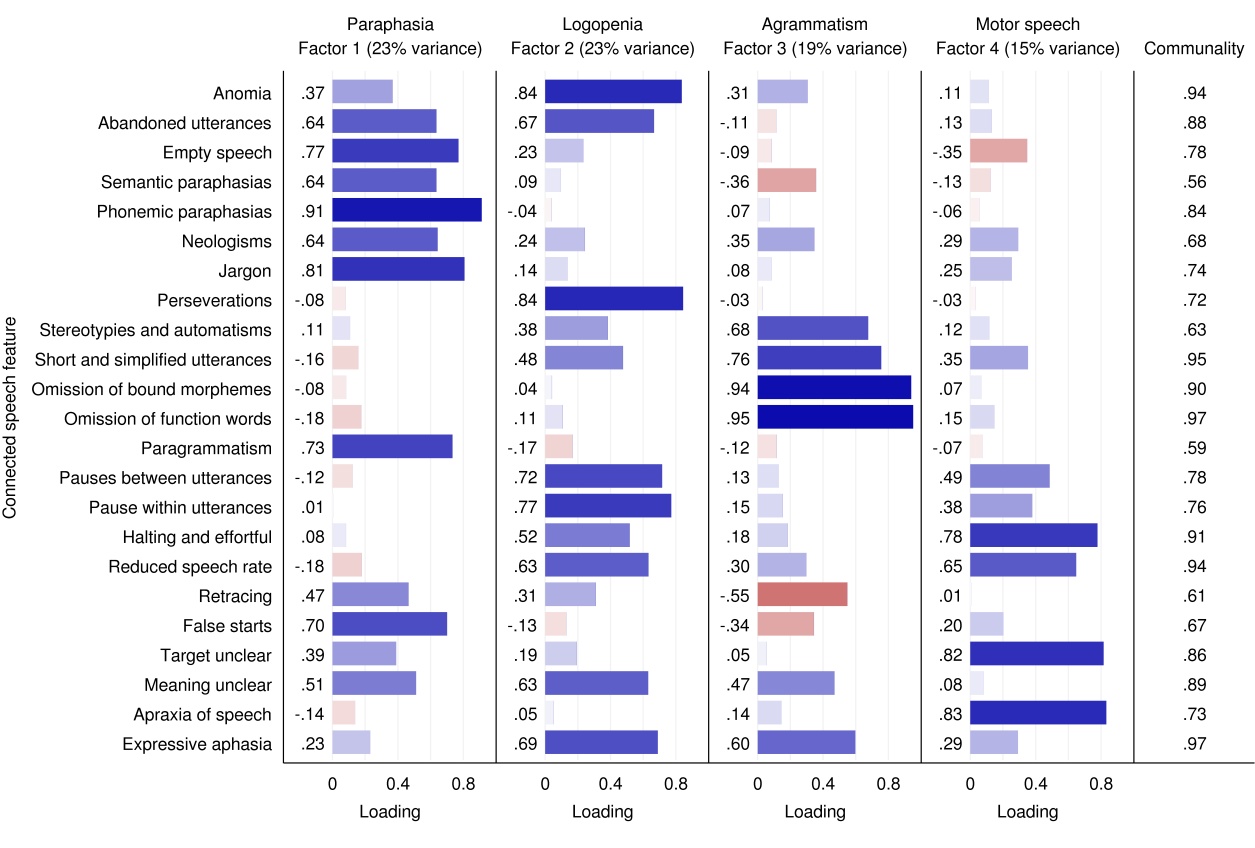
Casilio M, Rising K, Beeson PM, Bunton K, Wilson SM. Auditory-perceptual rating of connected speech in aphasia. Am J Speech Lang Pathol 2019; 28: 550-68. [pdf | doi]

We made it out of "The Inheritance"--the toughest escape room in Nashville!

We had a great lunch with Jane Wilkerson Yount (seated), who generously endowed the Wilkerson Yount Research Fund in 2017. This fund supports research in adult neurogenic communication disorders at the Vanderbilt Bill Wilkerson Center, and will be supporting a new investigation into treated recovery from post-stroke aphasia. Standing: Stephen Wilson, Melissa Duff, and Anne Marie Tharpe.

The new open access journal Neurobiology of Language launches tomorrow, supported by the Society for the Neurobiology of Language and MIT Press. I’m proud to serve as an inaugural member of the editorial board. Thanks to the editors-in-chief Steve Small and Kate Watkins, and everyone who made this possible.

Vintage IBM keyboard molded from Toblerone (among other features)...

We describe an adaptive semantic matching paradigm and demonstrate that it is a feasible, reliable and valid method for mapping language regions in people with aphasia.
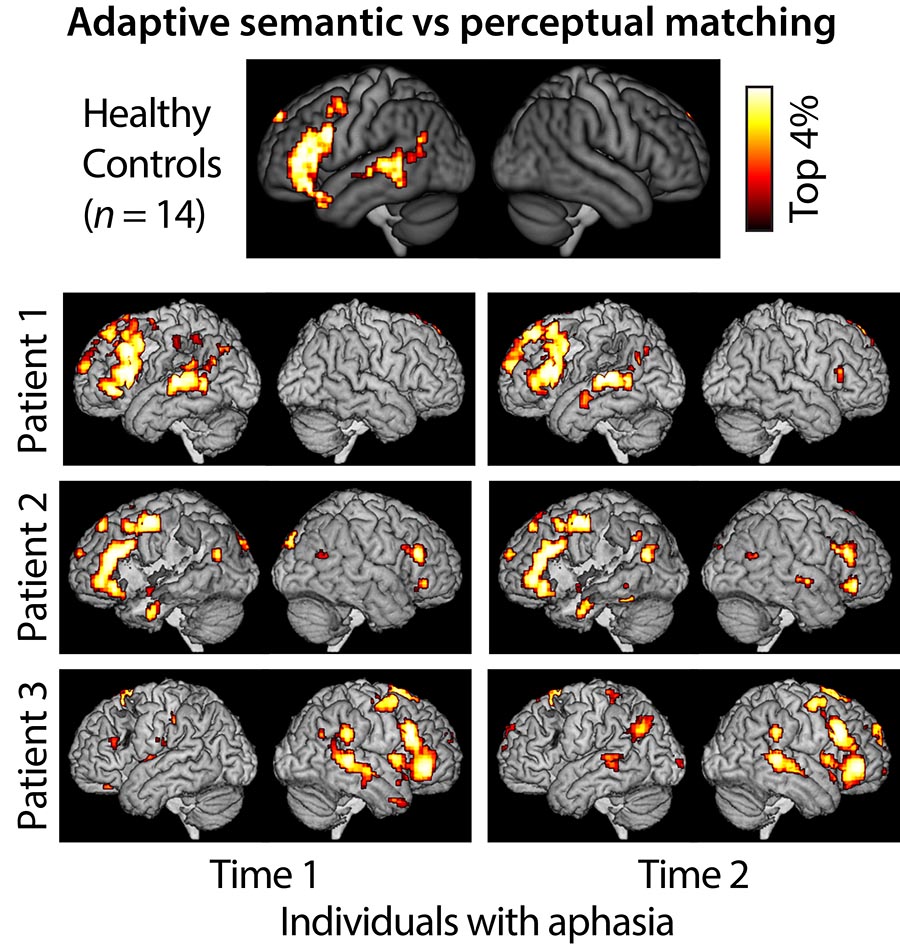
Wilson SM, Yen M, Eriksson DK. An adaptive semantic matching paradigm for reliable and valid language mapping in individuals with aphasia. Hum Brain Mapp 2018; 39: 3285-307. [pdf]
Cortical encoding of vowels is scaffolded on tonotopy, a fundamental organizing principle of auditory cortex that is not language-specific.

Fisher JM, Dick FK, Levy DF, Wilson SM. Neural representation of vowel formants in tonotopic auditory cortex. NeuroImage 2018; 178: 574-82. [pdf]
Direct cortical stimulation of the left inferior frontal gyrus can interfere with syntactic encoding but not single word processing, suggesting that this region plays an important role in the encoding of syntactic structure during sentence production.

Chang EF, Kurteff G, Wilson SM. Selective interference with syntactic encoding during sentence production by direct electrocortical stimulation of the inferior frontal gyrus. J Cogn Neurosci 2018; 30: 411-20. [pdf]
The Quick Aphasia Battery (QAB) aims to provide a reliable and multidimensional assessment of language function in about a quarter of an hour, bridging the gap between comprehensive batteries and rapid screening instruments.
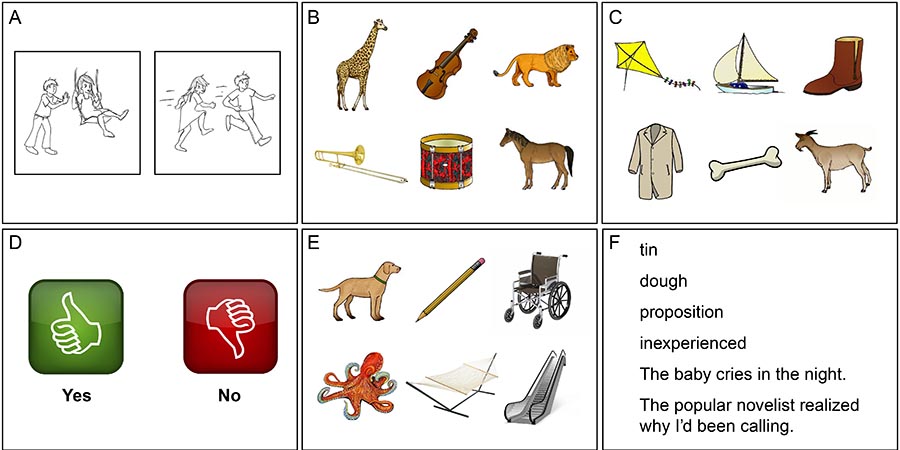
Wilson SM, Eriksson DK, Schneck SM, Lucanie JM. A quick aphasia battery for efficient, reliable, and multidimensional assessment of language function. PLOS ONE 2018; 13(2): e0192773. [pdf]
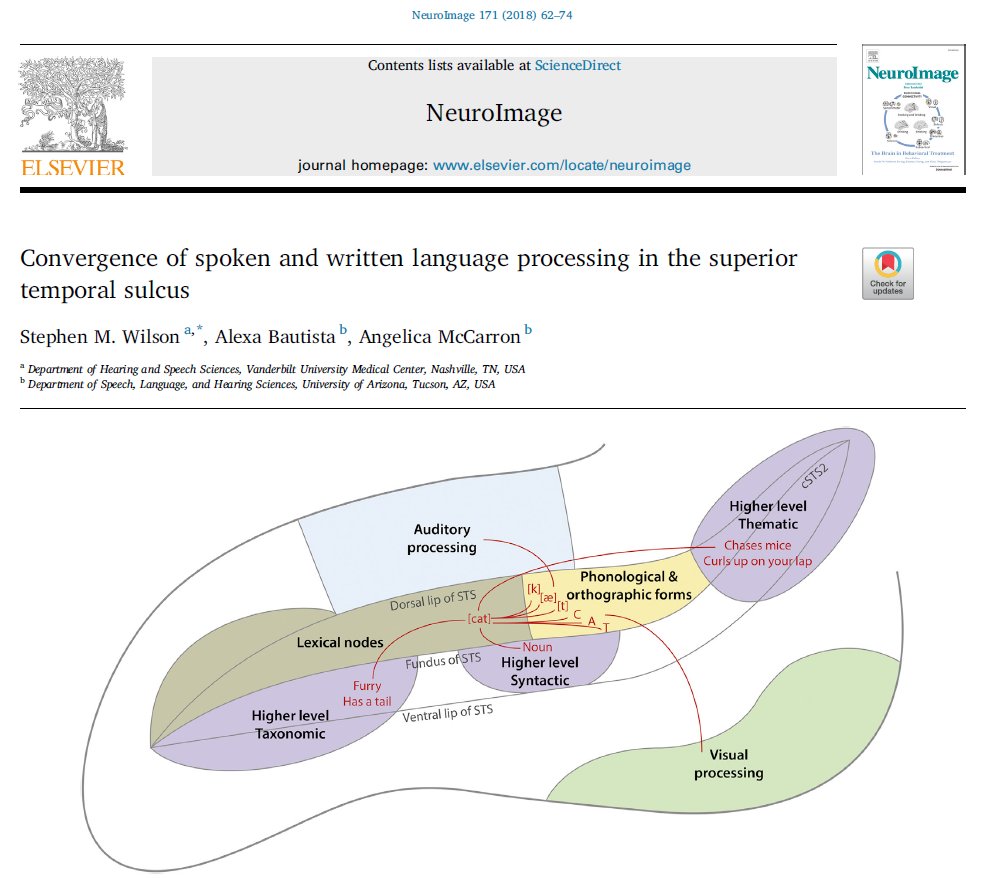
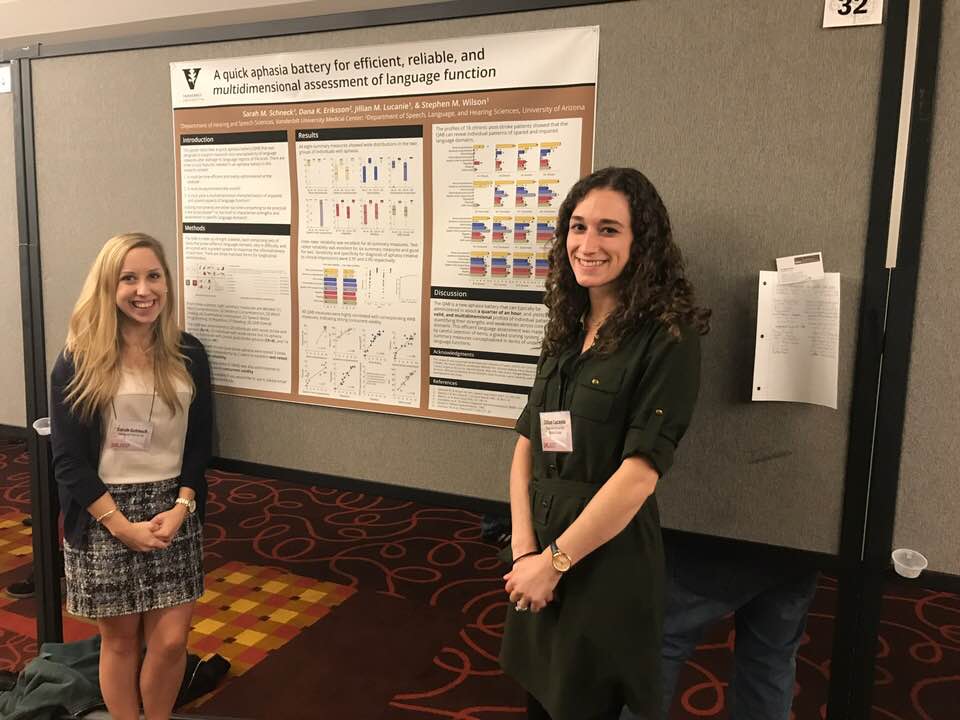
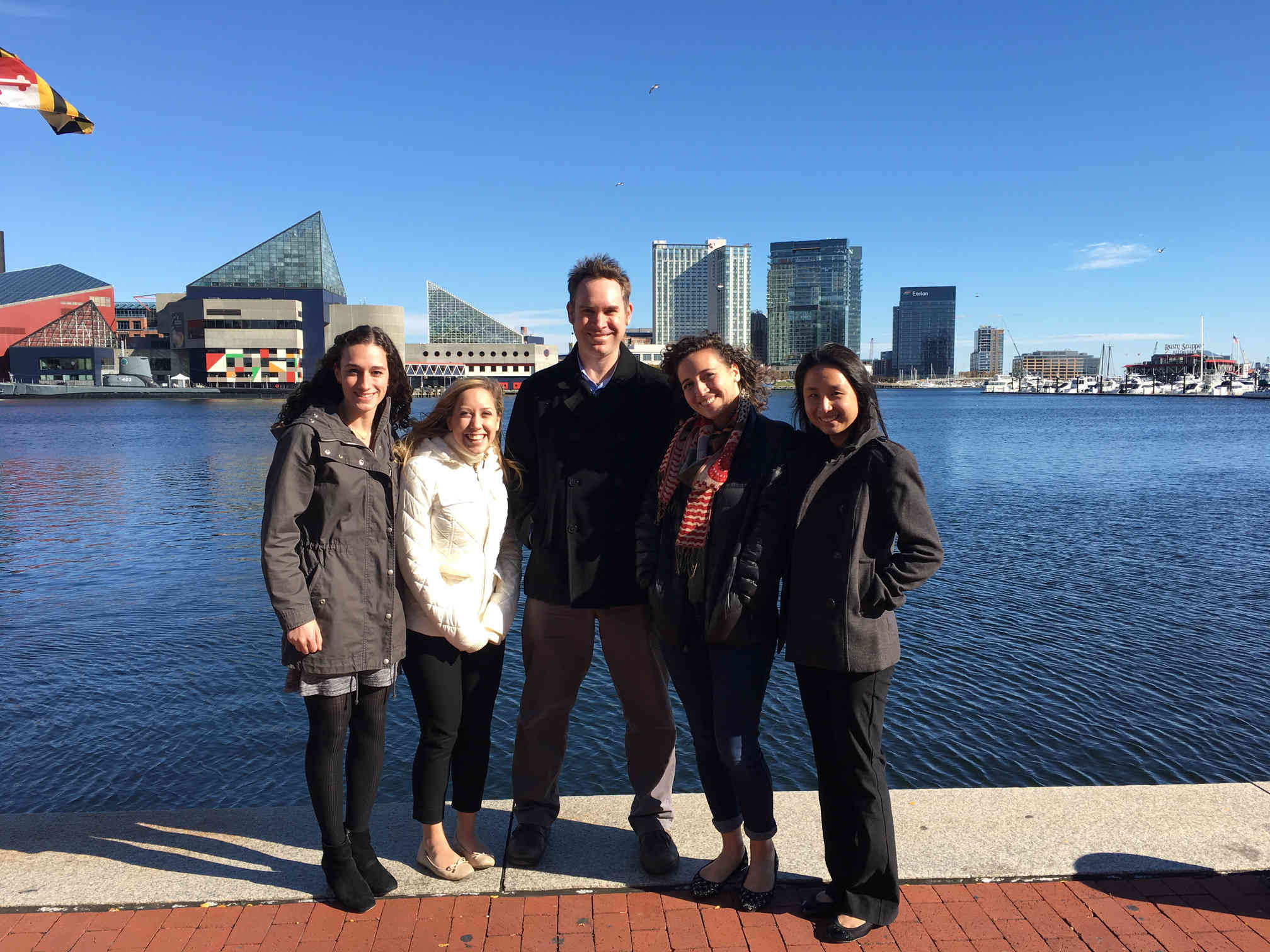

An amazing birthday gift from my lab members! Probably not the intended use of Vanderbilt’s 3D printer...

Credit: Deborah Levy.
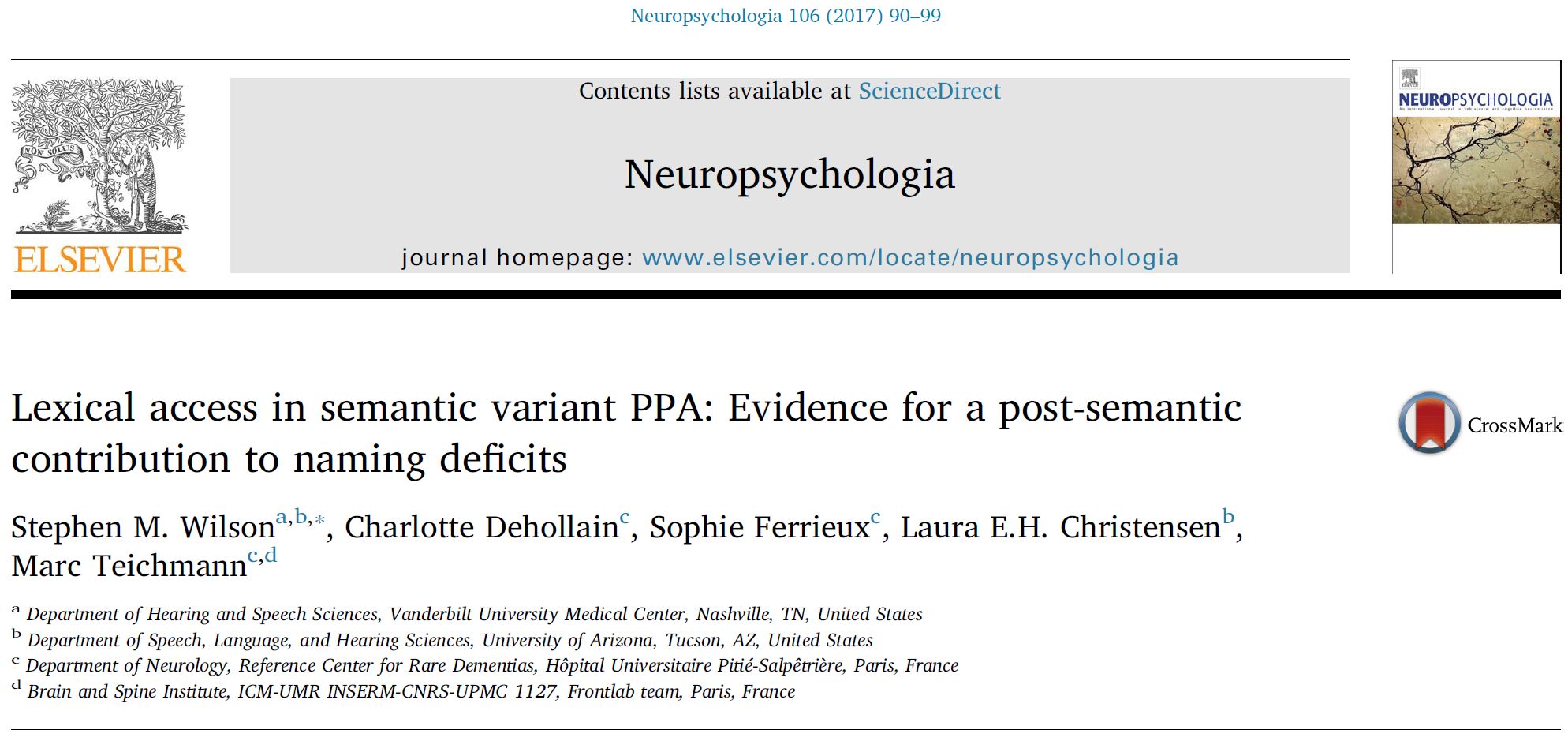


An MRI cake for my birthday! Thank you, Deb, Melodie, Sarah and Jillian for the impromptu party...
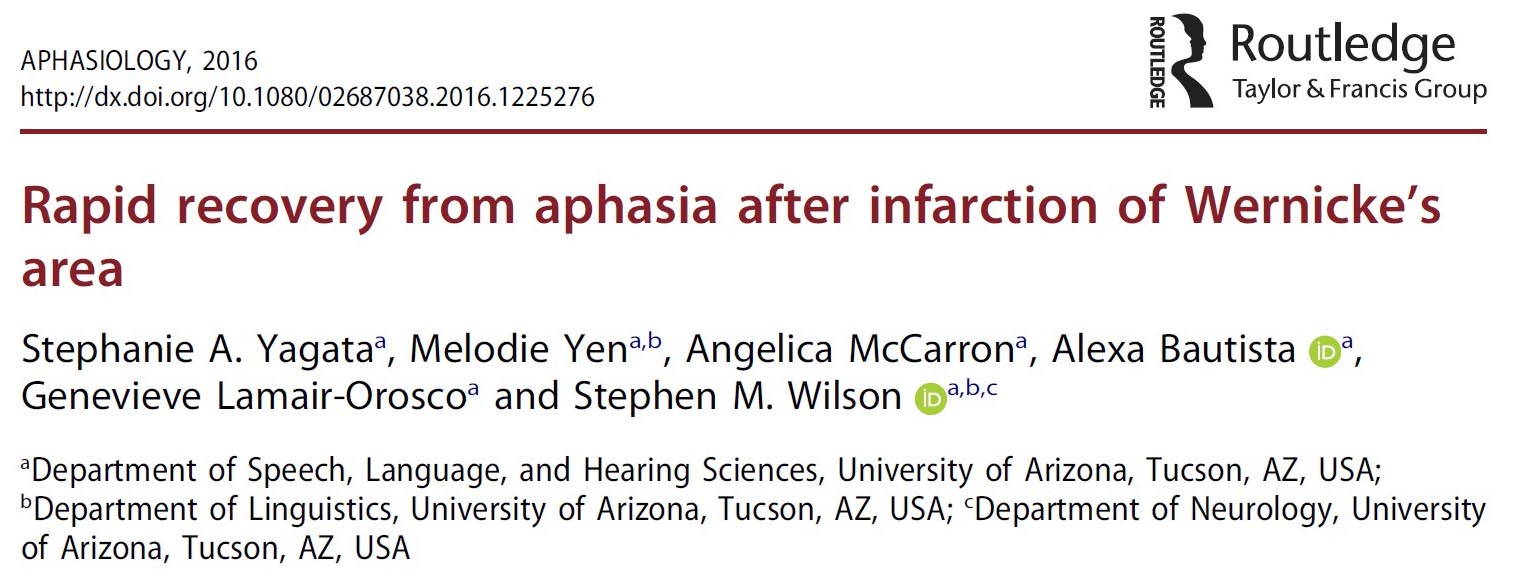
This paper, based on Stephanie Yagata's Masters thesis, comprises a detailed investigation of early patterns of change in connected speech after focal infarction of Wernicke's area.
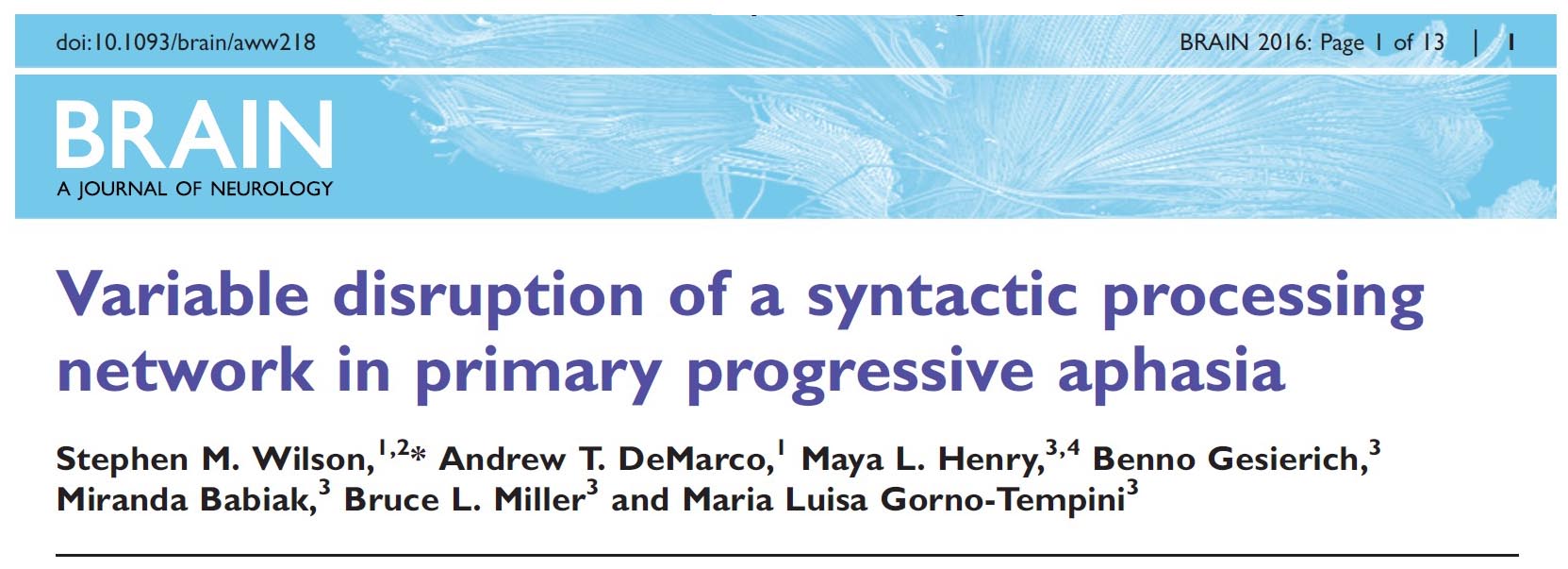
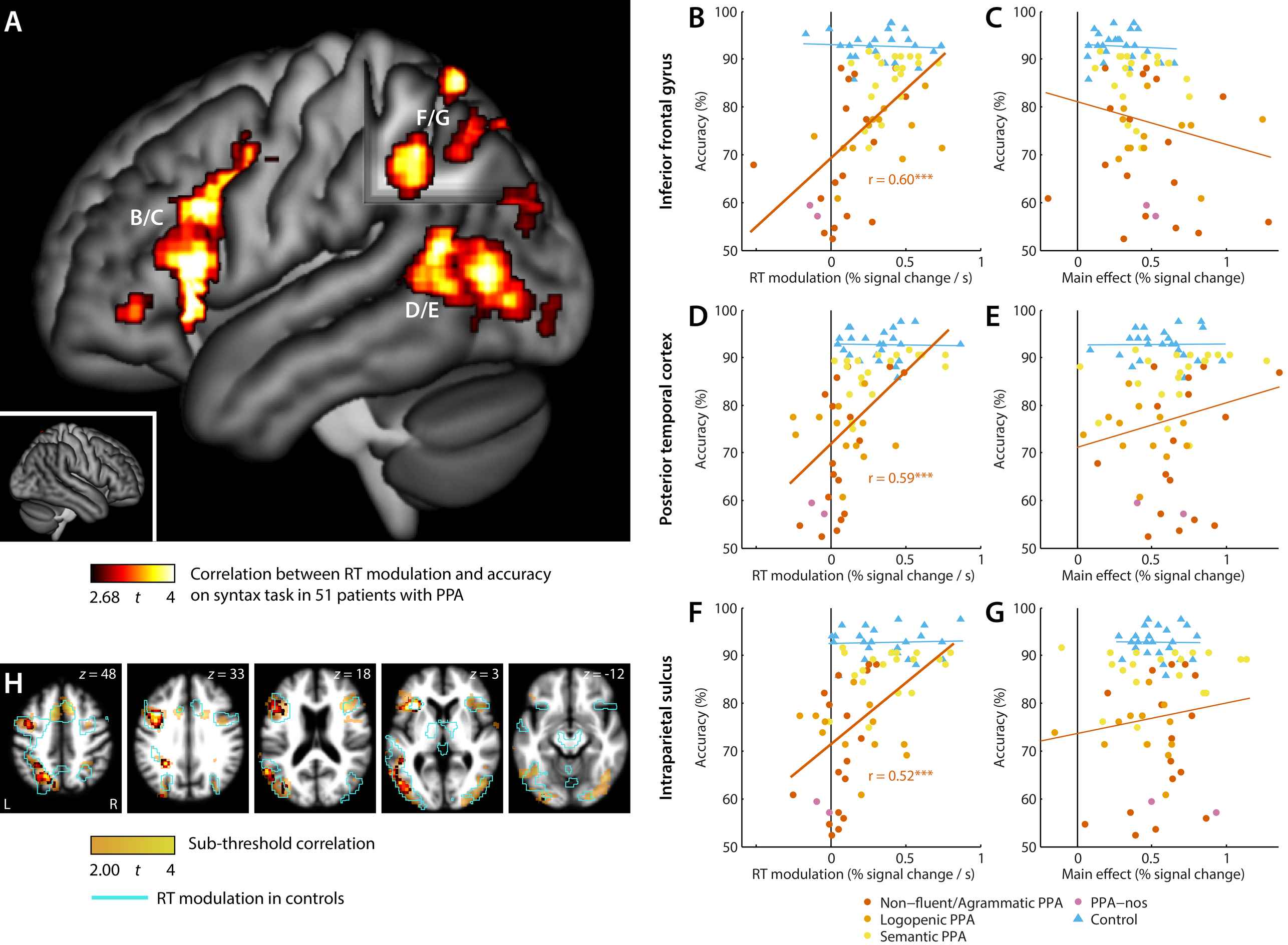

The lab has now relocated to the Department of Hearing and Speech Sciences at Vanderbilt University Medical Center.
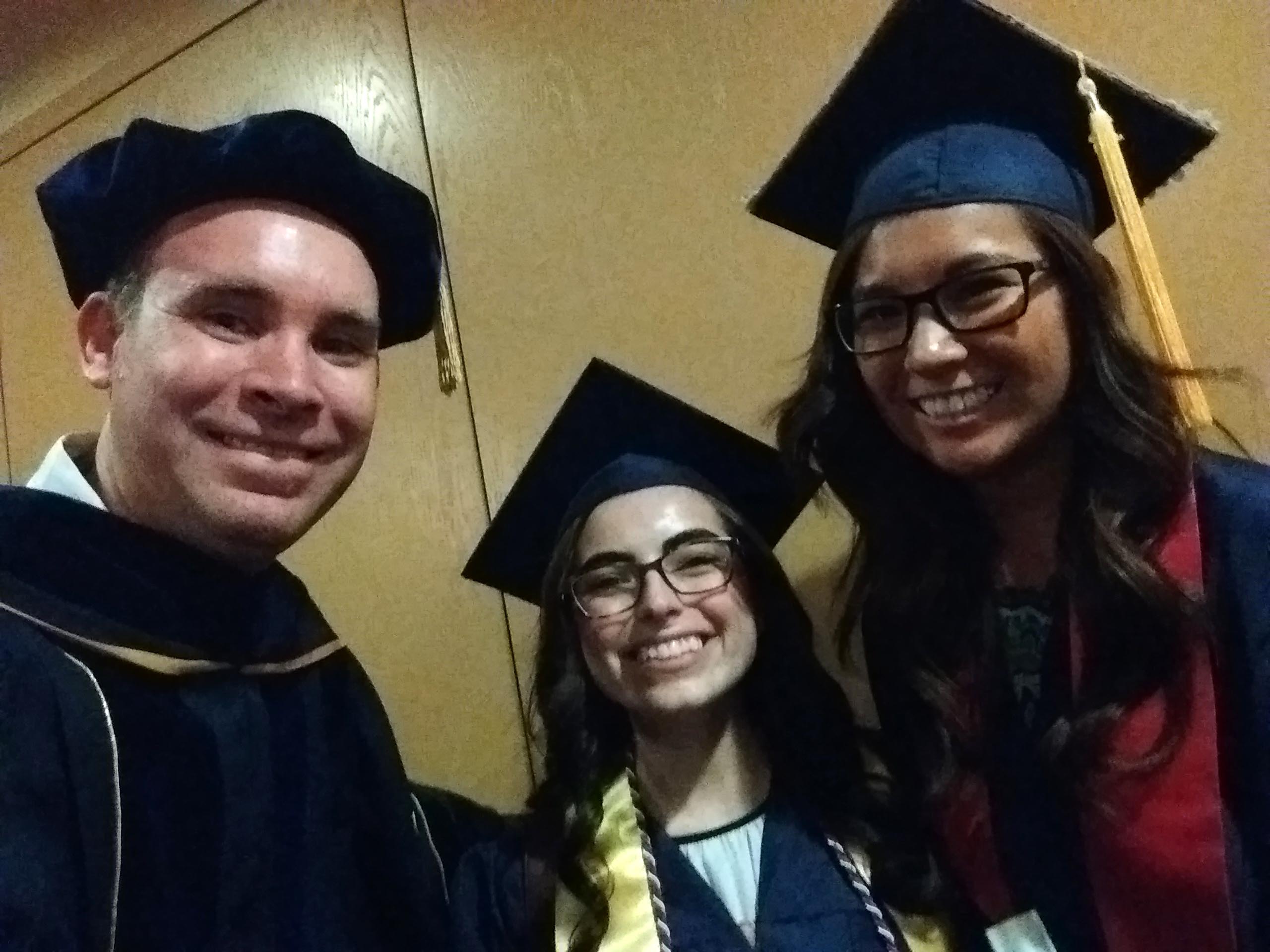
Angelica McCarron, B.S., Stefanie Lauderdale, B.S.

This paper is based on Alexa's honors thesis, for which she received the award for Excellence in Undergraduate Research from the Department of Speech, Language, and Hearing Sciences for 2015.

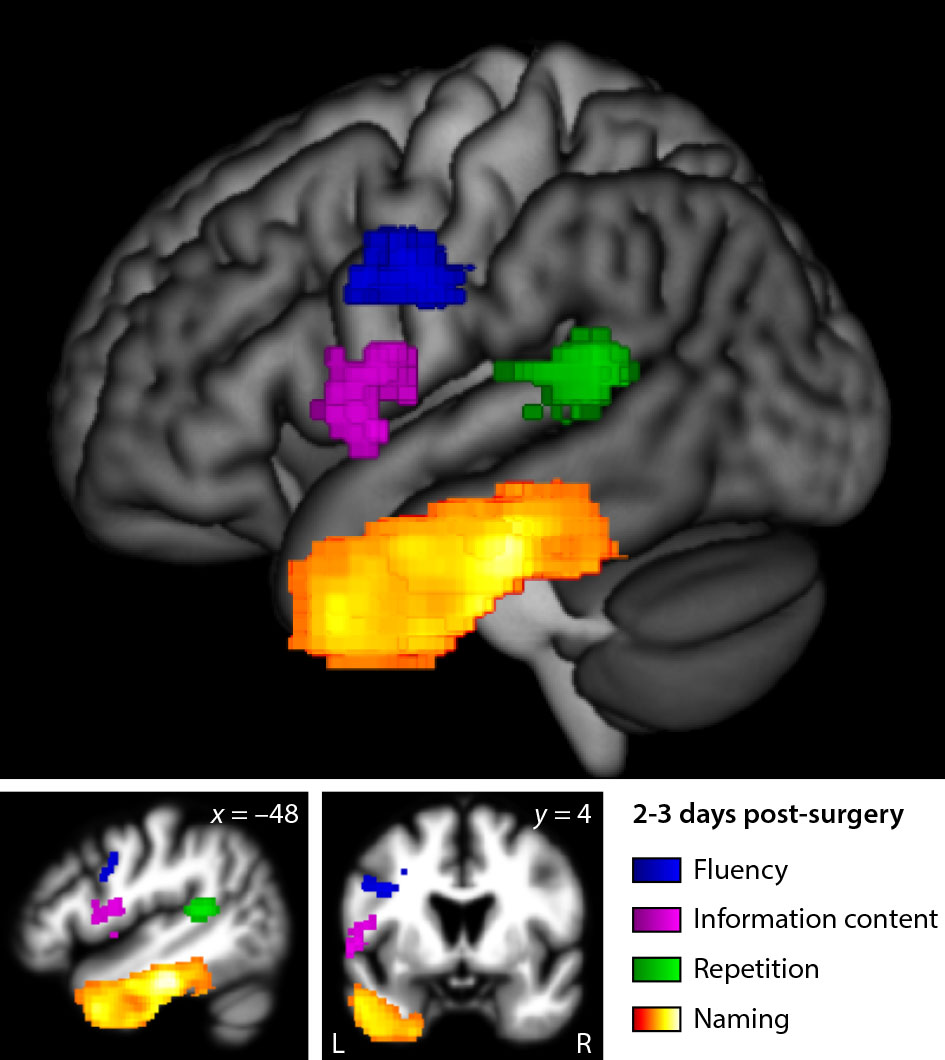

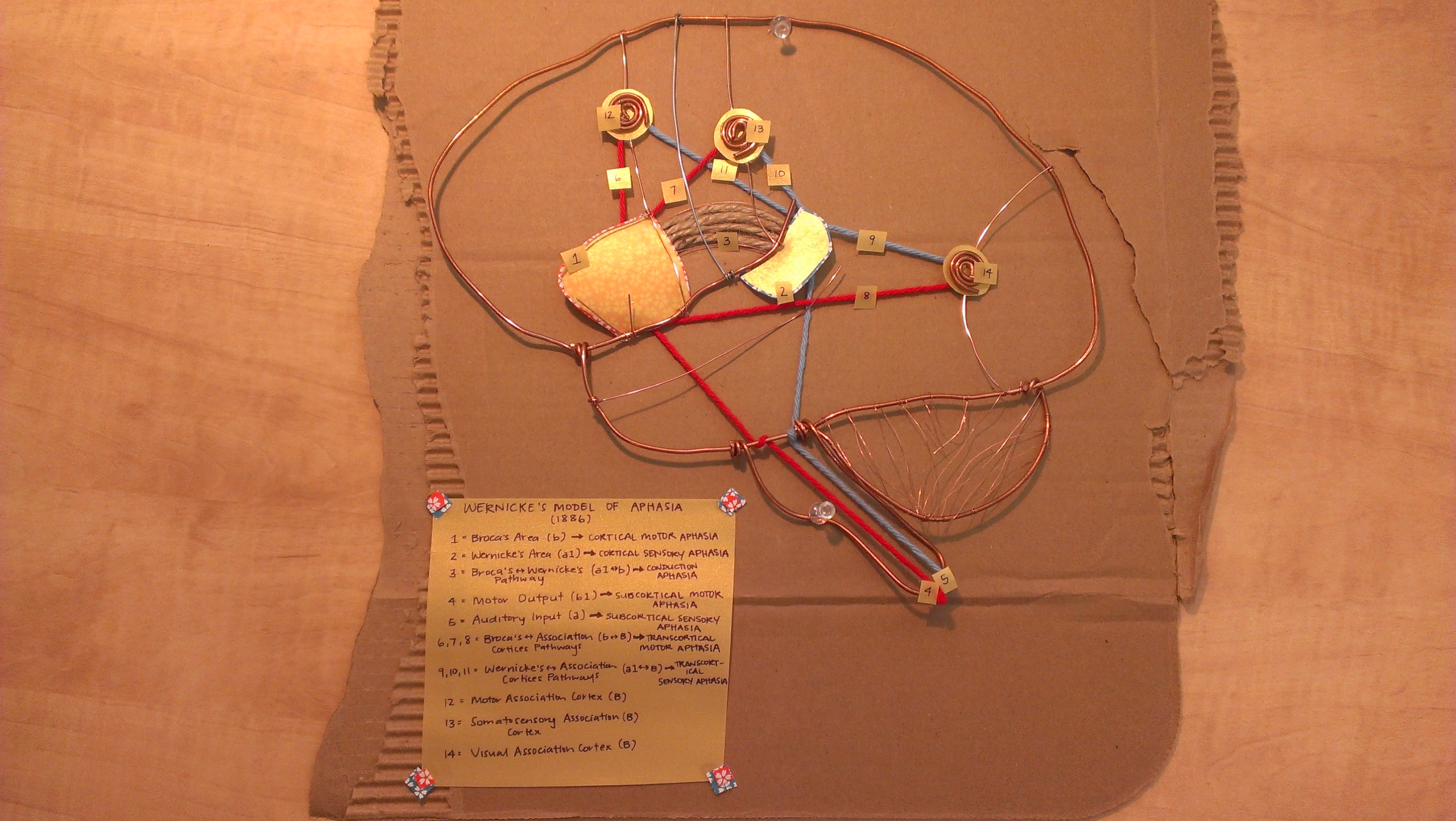

Credits: Angelica McCarron, Alexa Bautista.
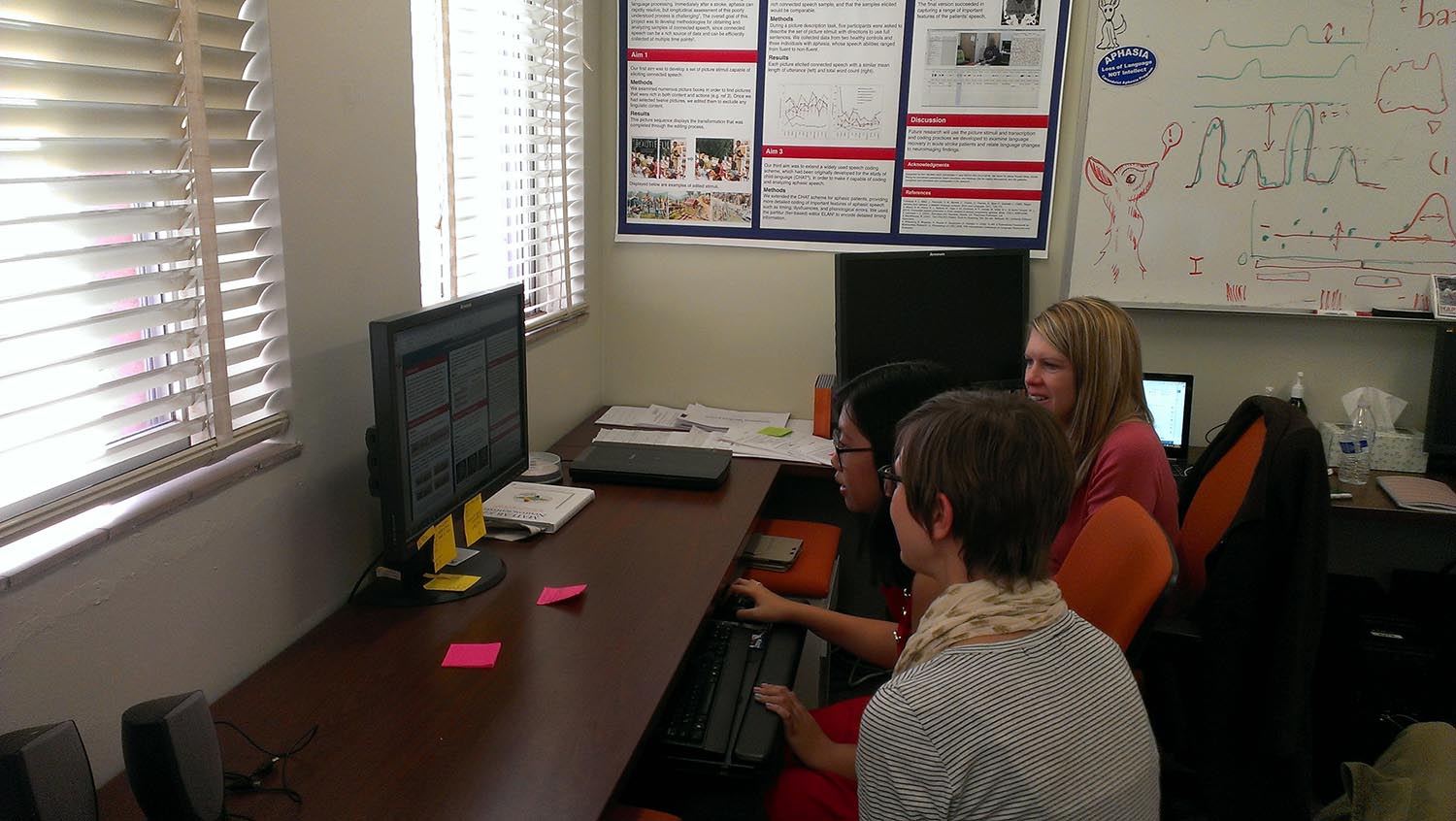
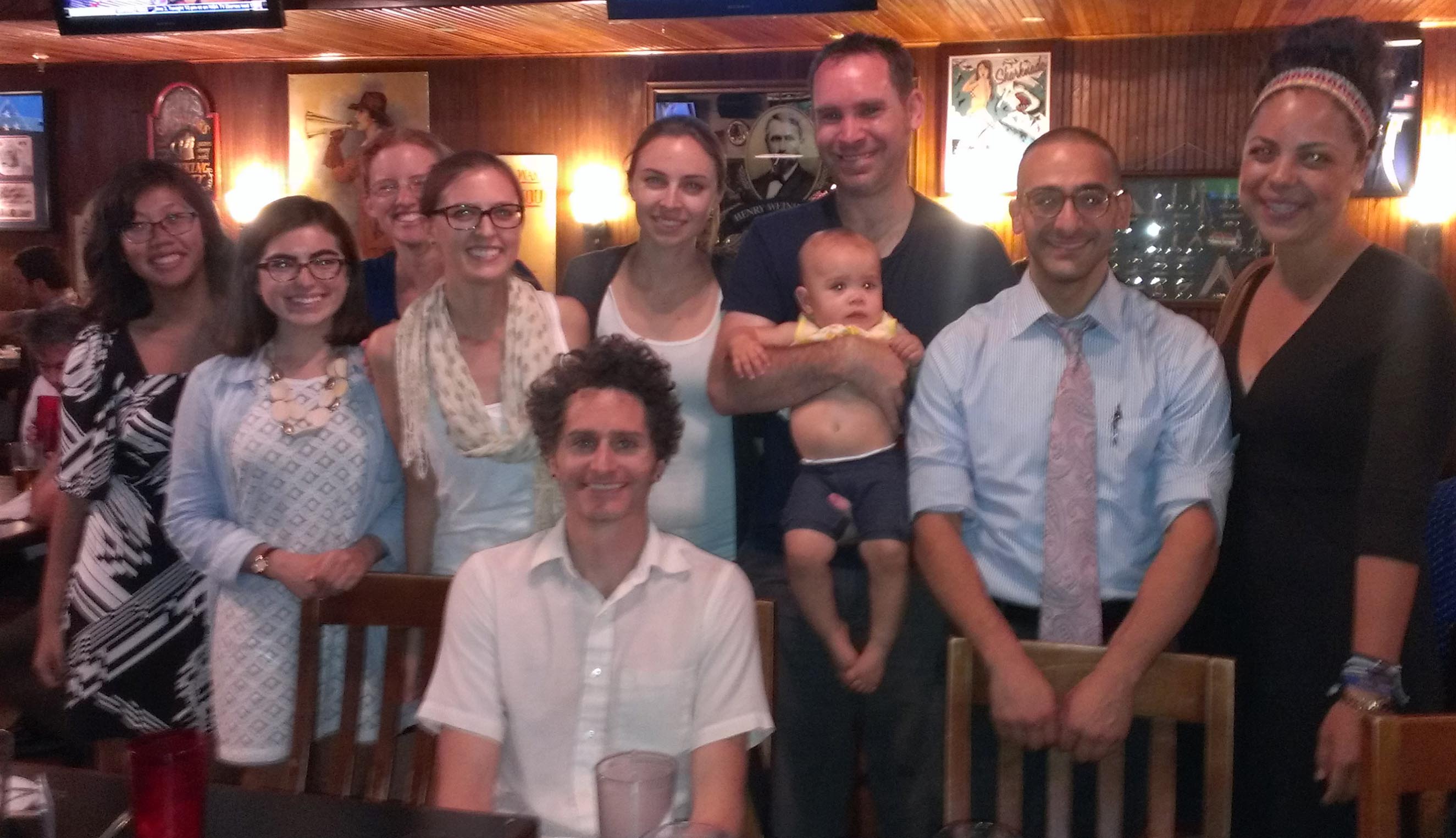
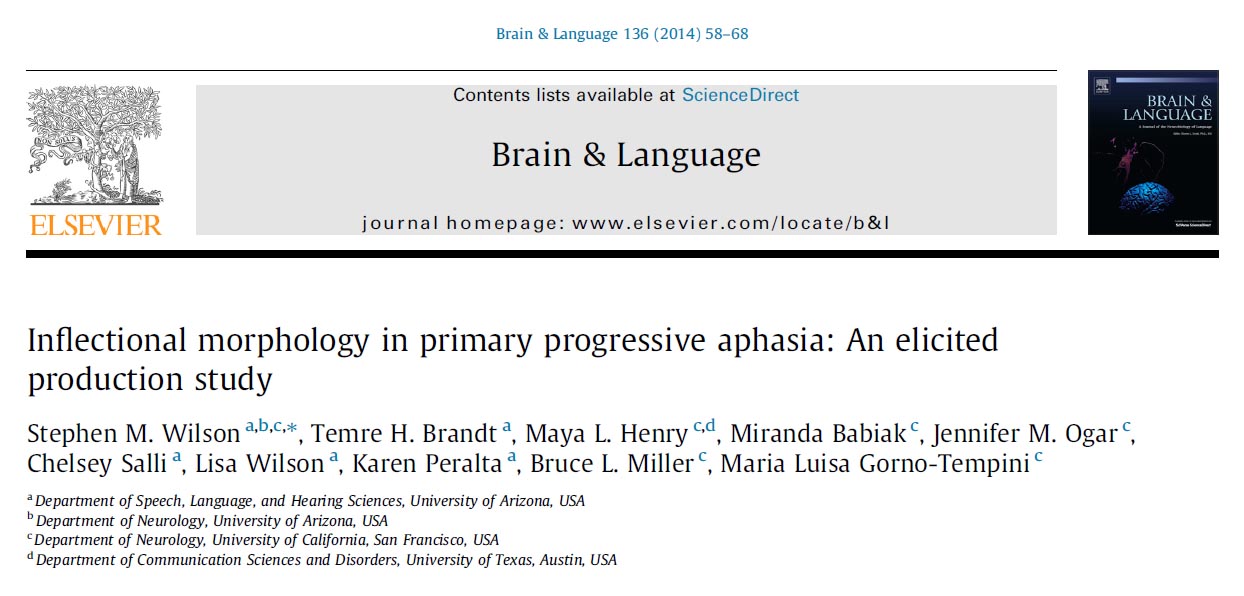
Angelica McCarron appeared on KXCI's "The Thesis" today, where she talked about the neural basis of language, explained her three projects, and did some guest DJing. Listen!

NIH Awards UA $2M to Study Recovery of Language After Stroke
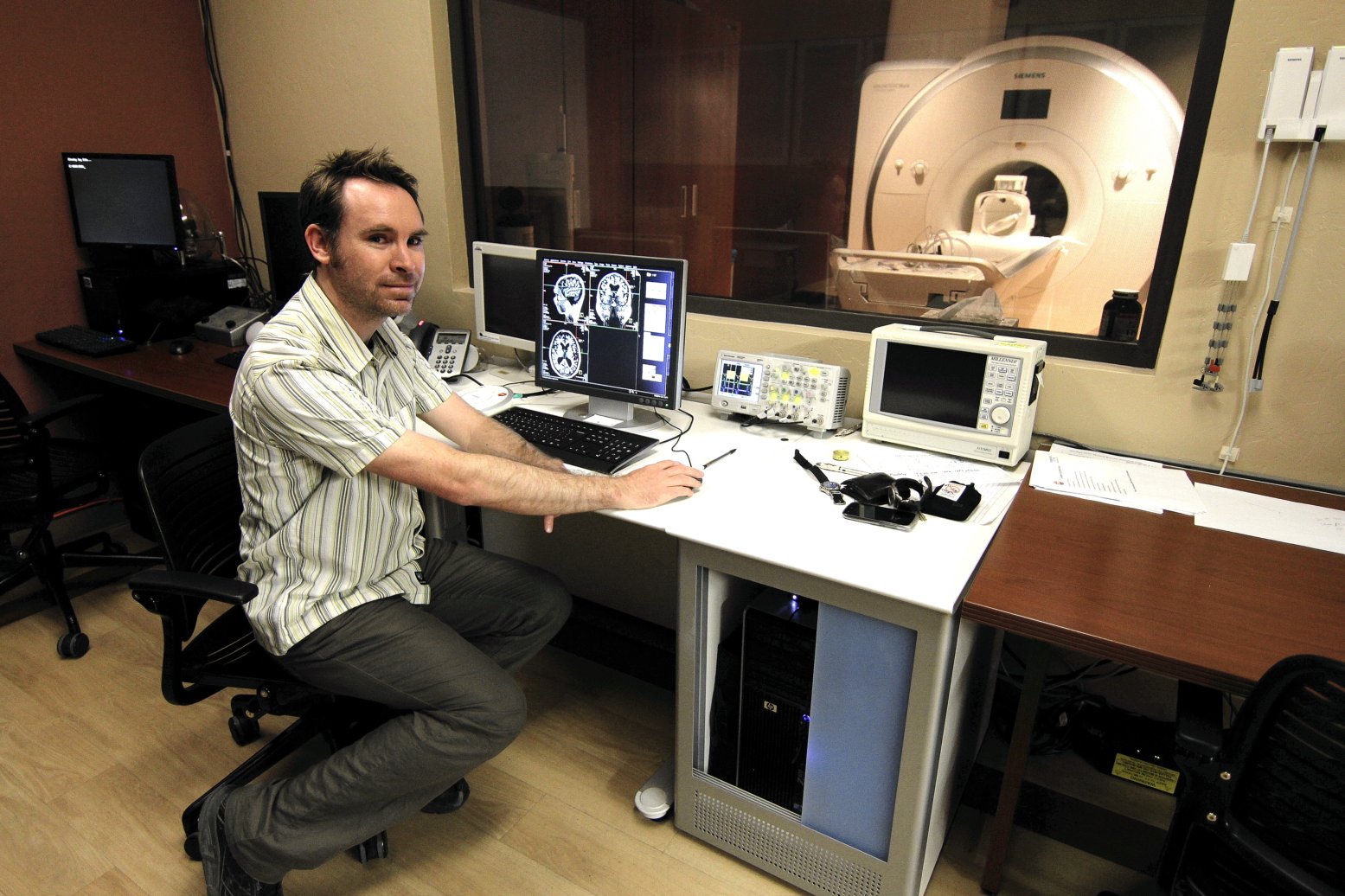
Temre Brandt has received the award for Excellence in Undergraduate Research from the Department of Speech, Language, and Hearing Sciences for 2014. This award is in recognition in the critical roles she is played in both our acute stroke project and our inflectional morphology in PPA project.
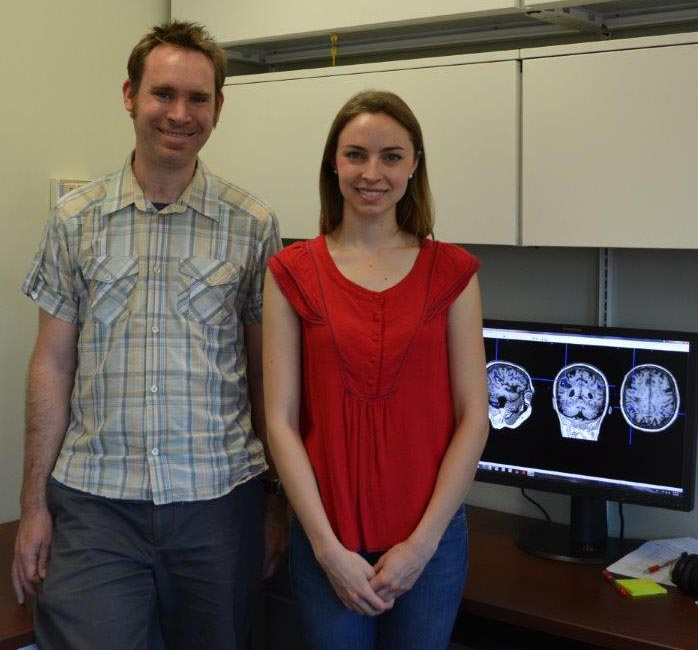
Julia Fisher has received a GPSC Achievement Award for Outstanding Interdisciplinary Development by a Graduate/Professional Student (Honorable Mention), for her work bridging Lingusitics and Speech, Language, and Hearing Sciences.
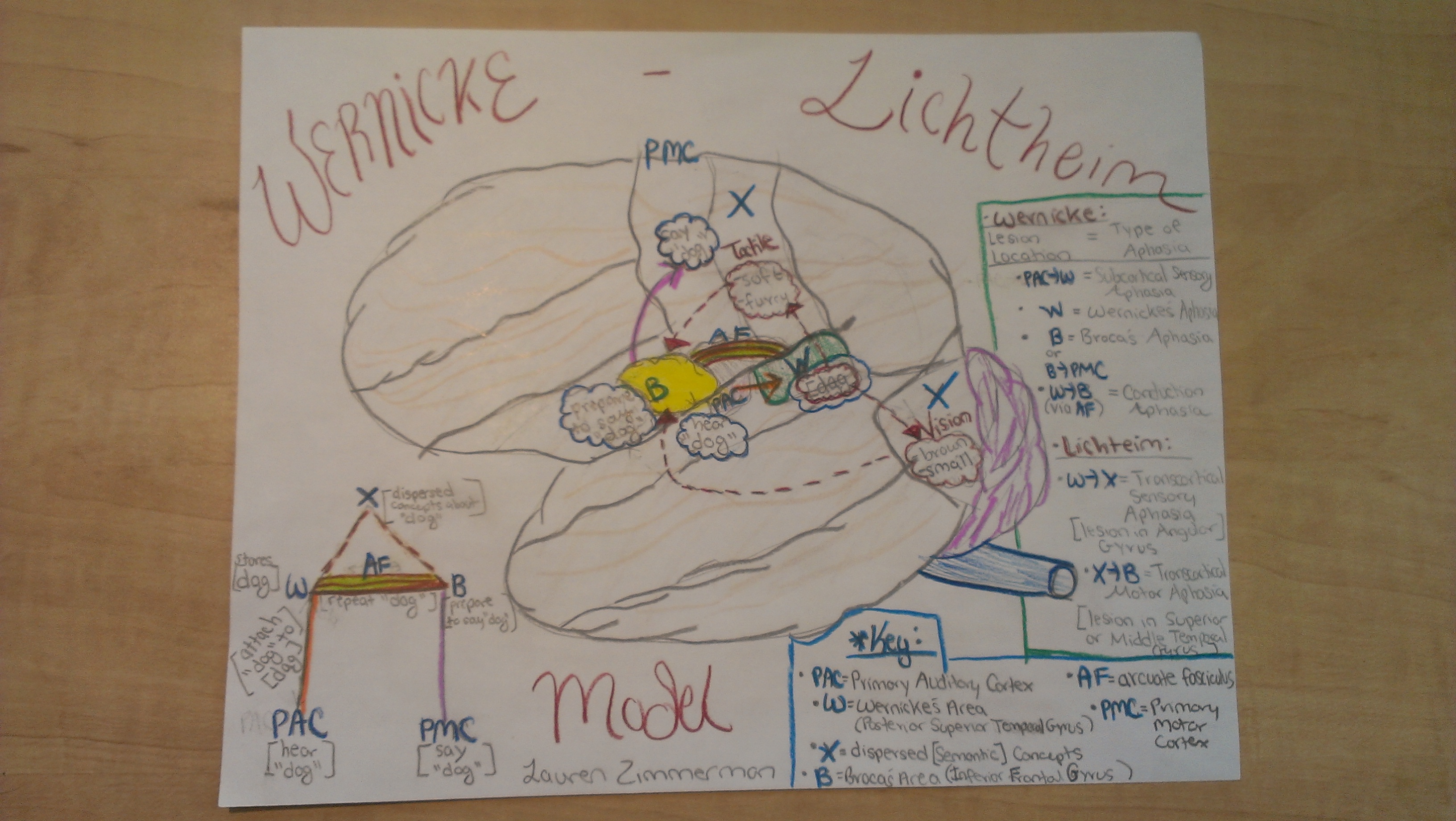
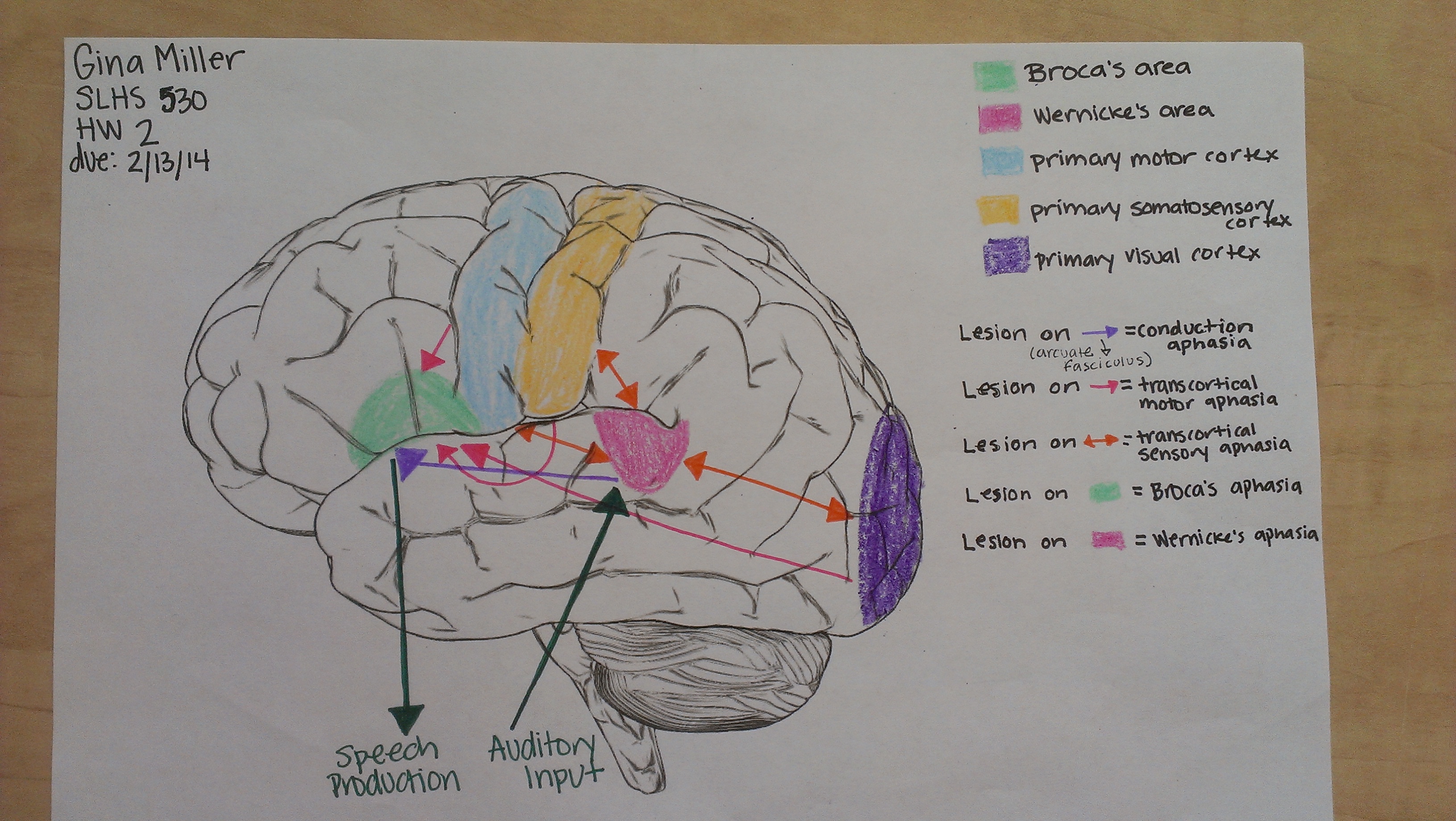
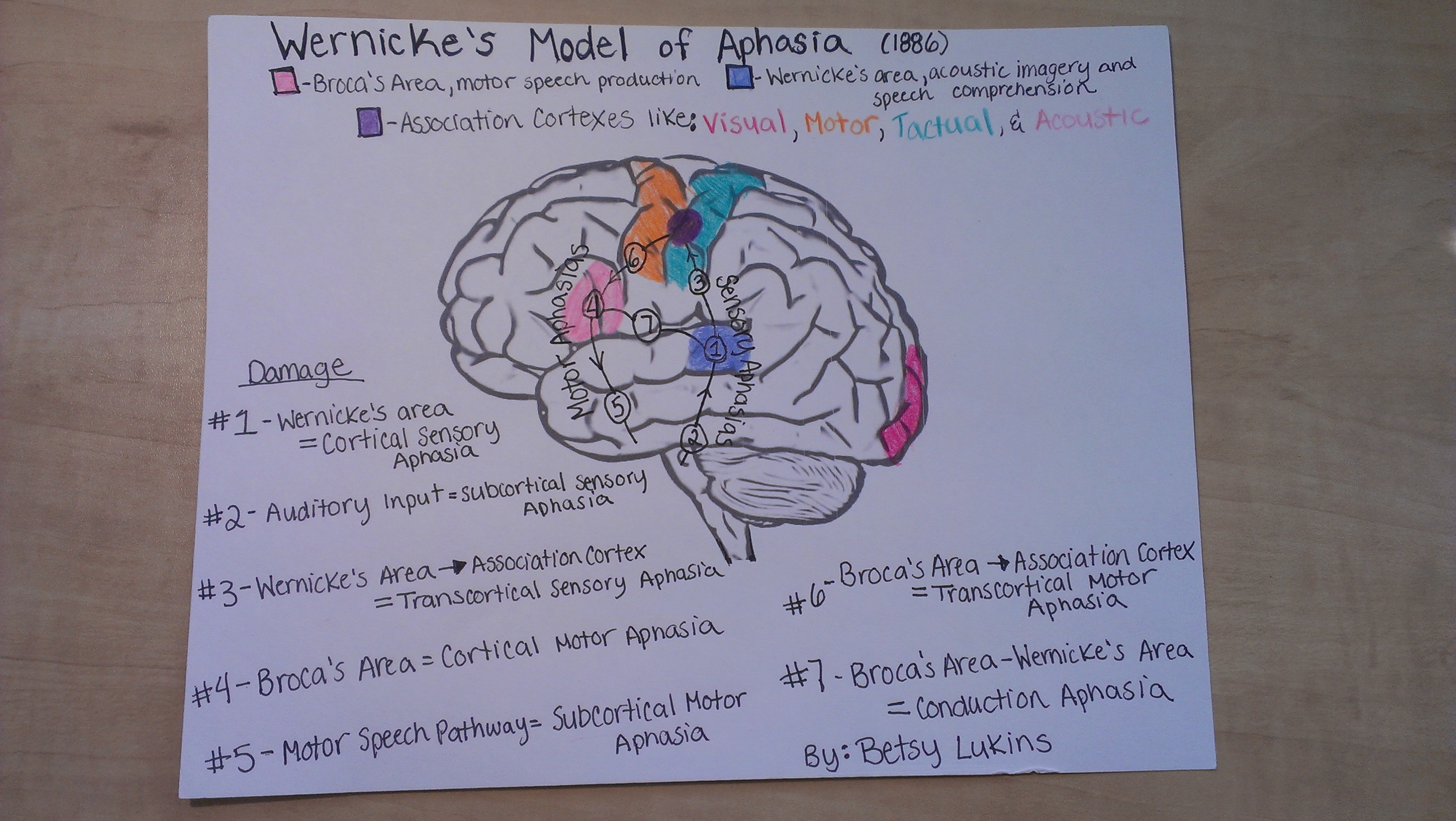
Credits: Lauren Zimmerman, Gina Miller, Betsy Lukins.
Here is a map of core language areas in an individual participant, using our new Siemens Skyra 3T scanner, tiny voxels, hypercapnic normalization, and vein masking. Note the precise localization of language regions to the dorsal bank of the superior temporal sulcus!
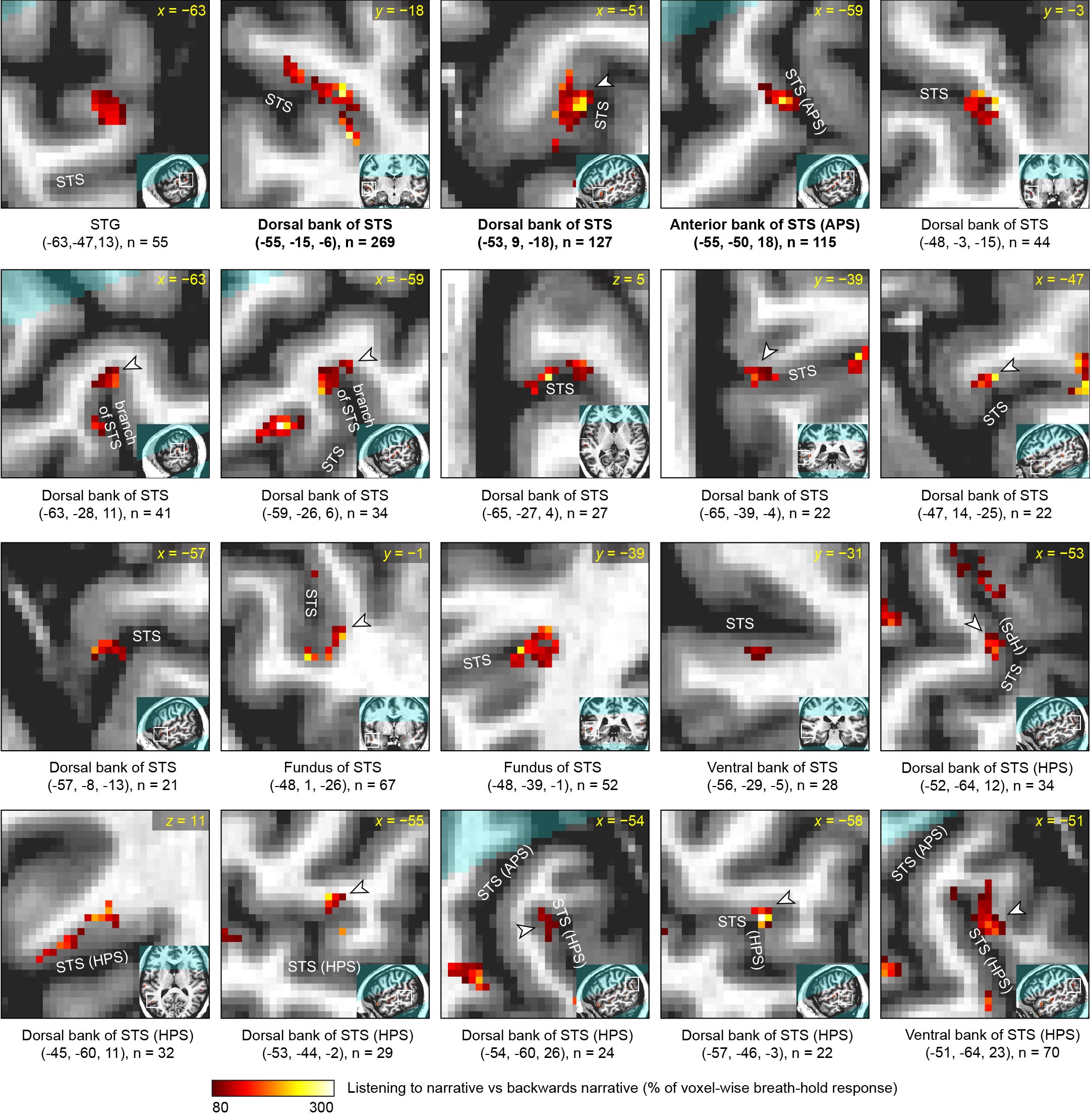
This research is described in our new paper which is now available online ahead of print:



It's been a subpar monsoon season for central Tucson, but anyone that got caught out in this today got properly wet!

After a few months of making do with surpus furniture that Scott, Julia and I pieced together, we now have proper furniture in the scanner console room! Lots of fun unplugging 6,000 cords and then trying to remember how to reassemble everything...
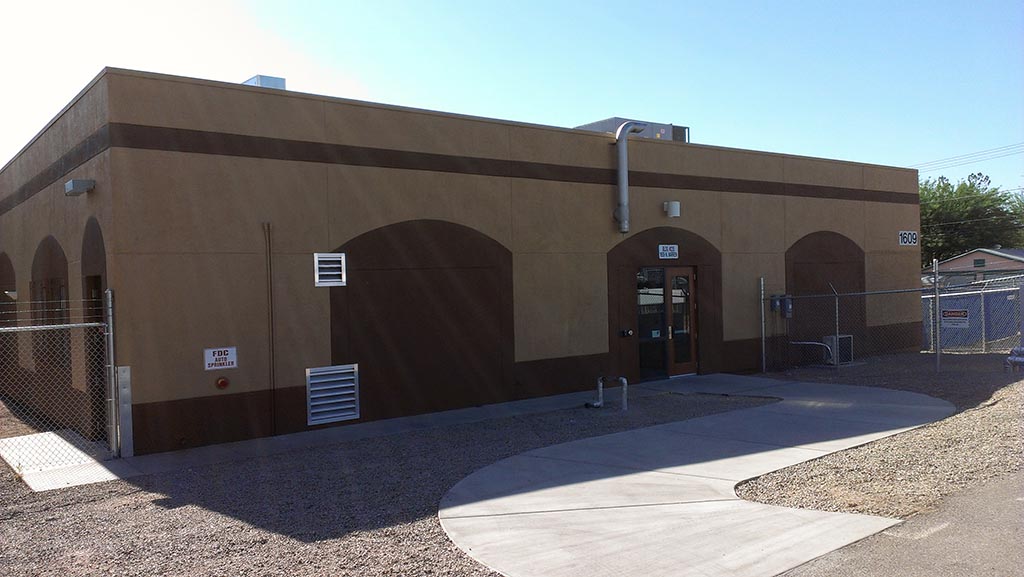
They painted the scanner building desert colors...
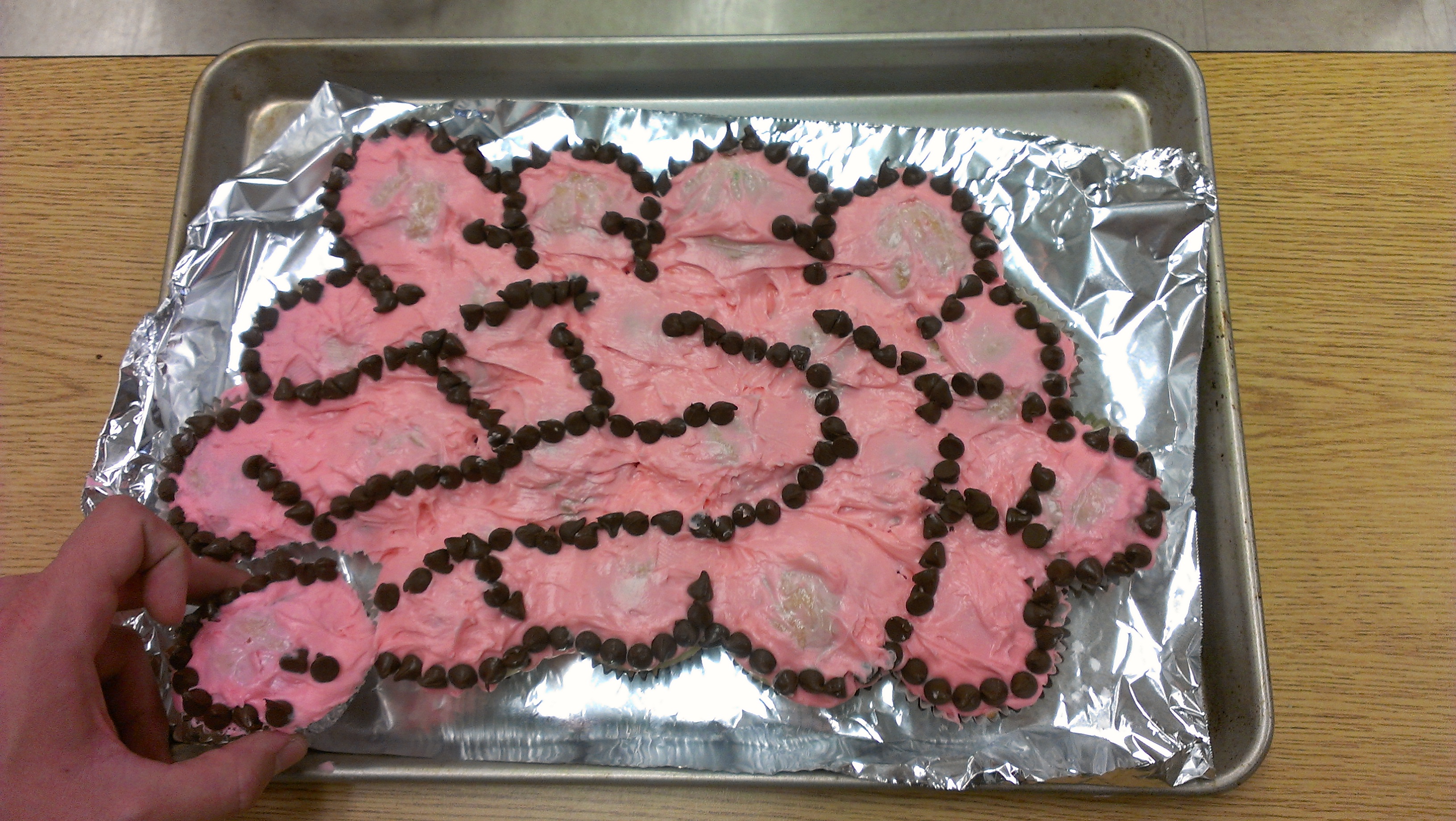
Credits: Milo White, Samantha Ricks.
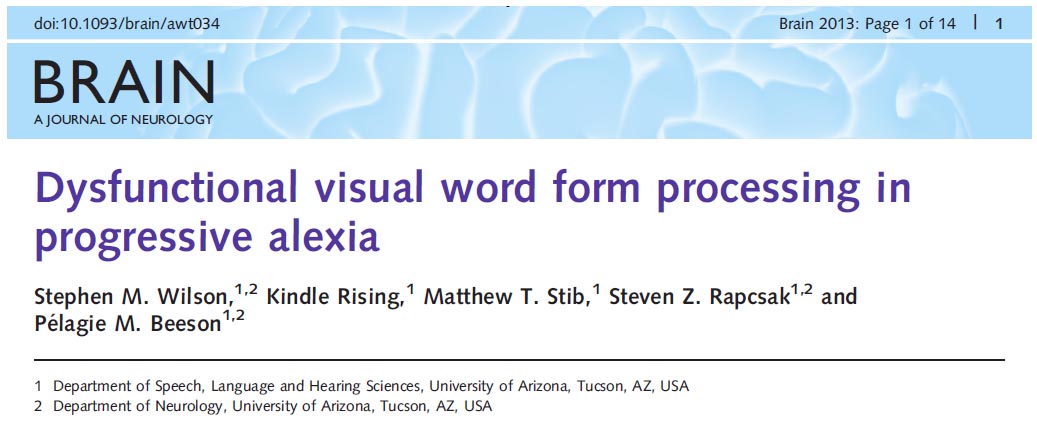
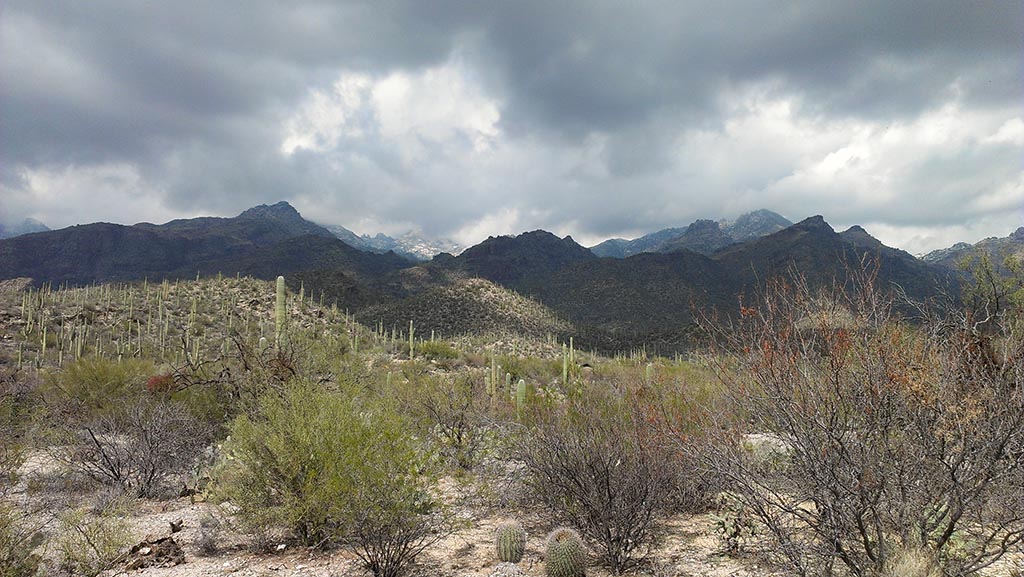
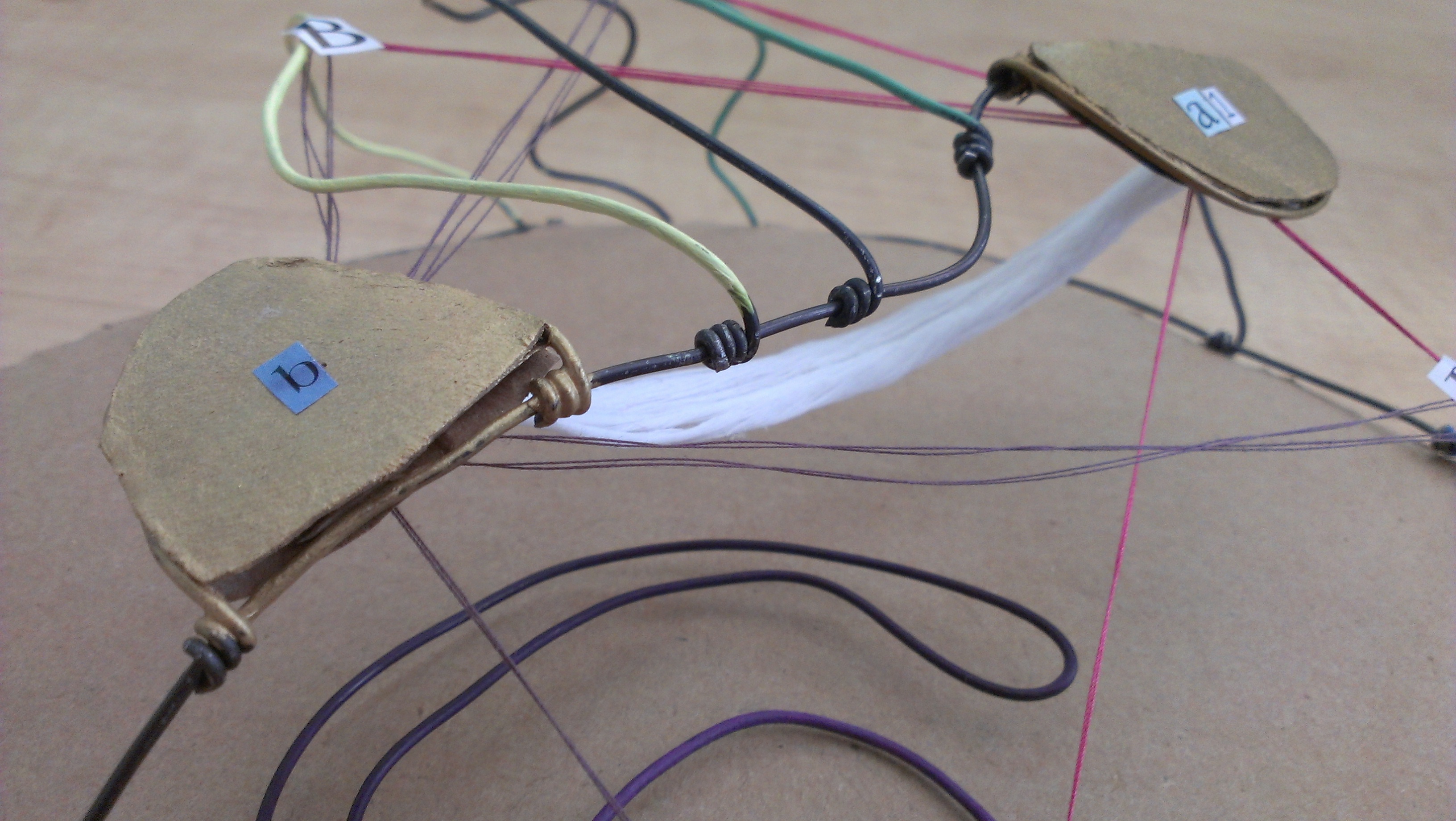
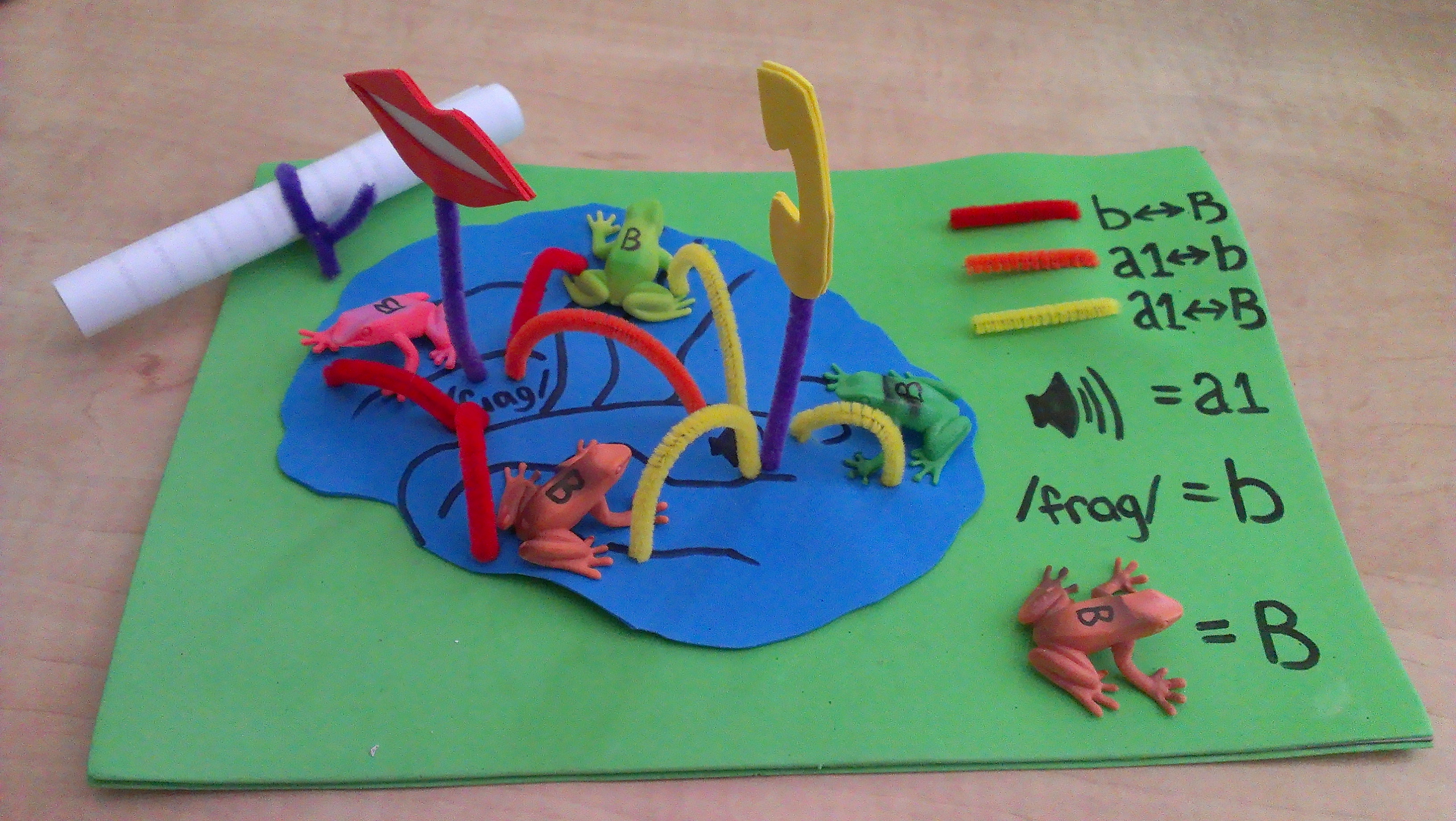
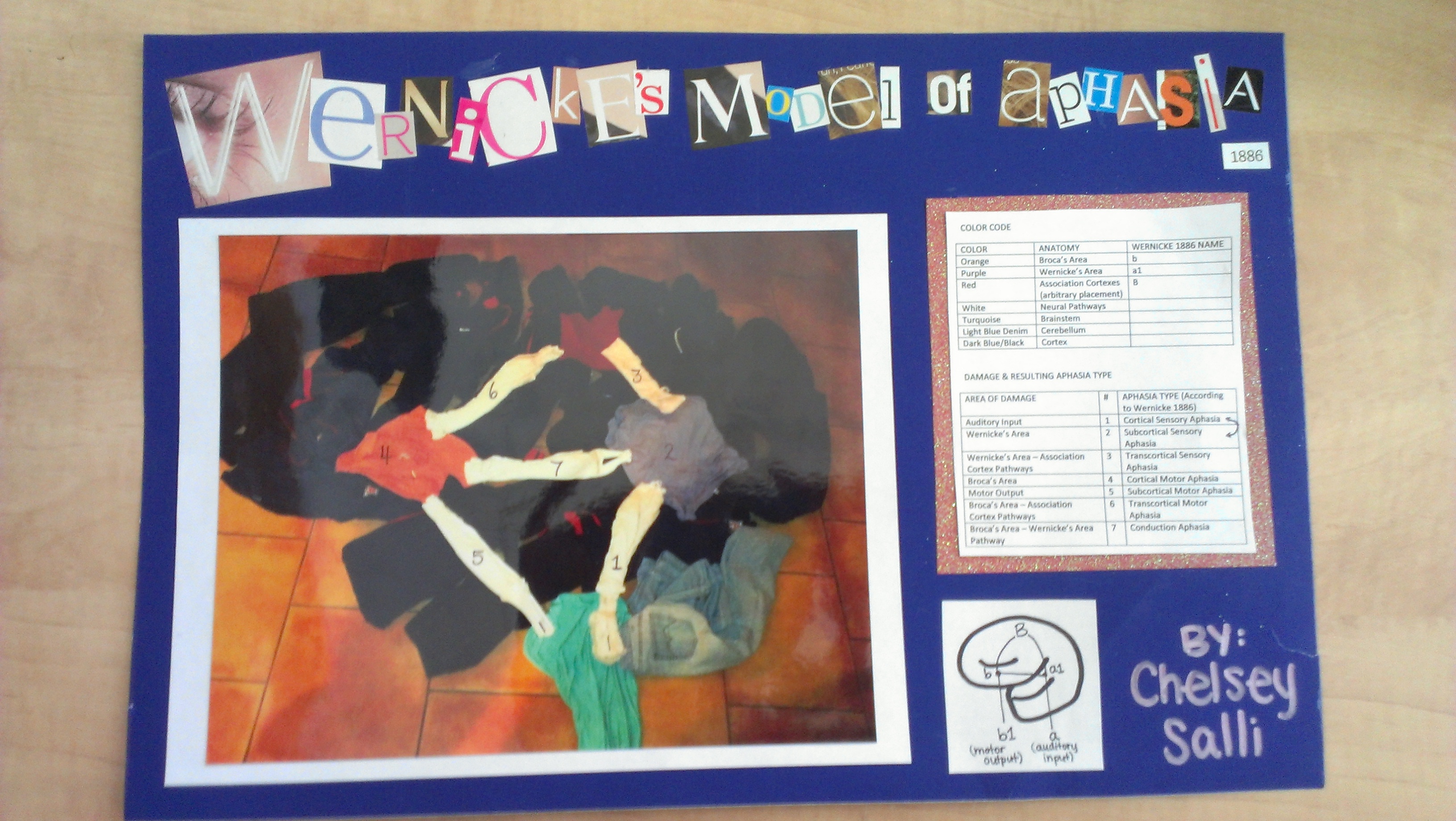
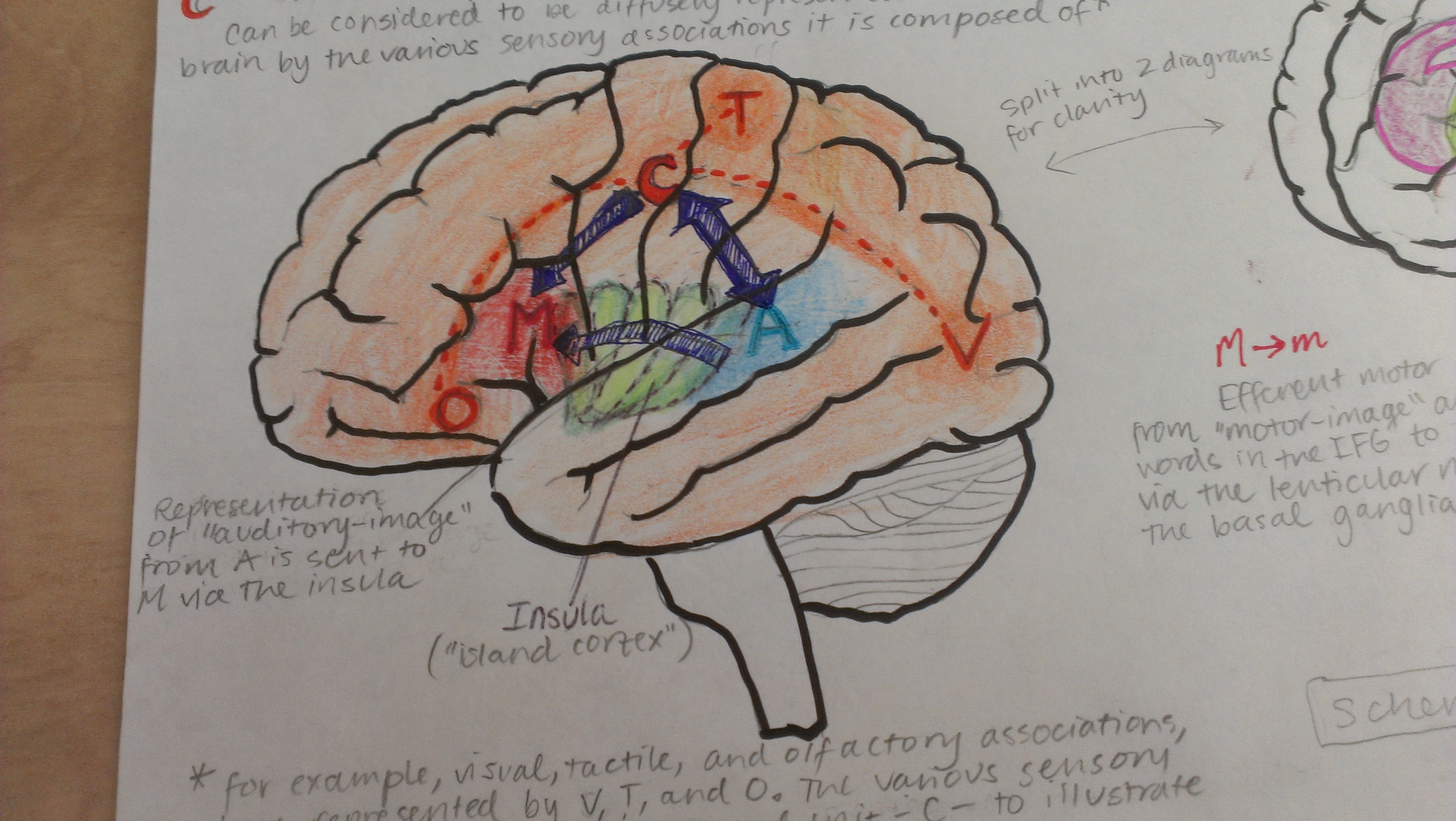

Credits: Temre Brandt, Rachel Auer, Chelsey Salli, Natalie Carmen, Alex Swiderski.

I've just uploaded a new version of VLSM: version 2.5 to the Resources page. The new version allows lesion size to be automatically calculated and included as a covariate. To use this feature, simply include 'LesionSize' in your list of variables. This is useful only for analysis of discrete lesions, not for VBM.
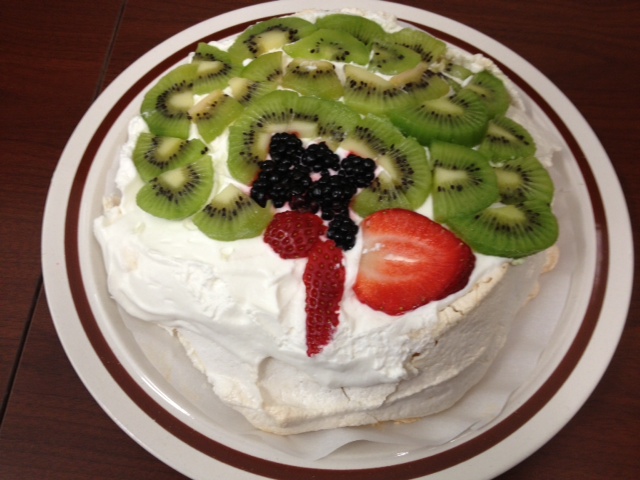

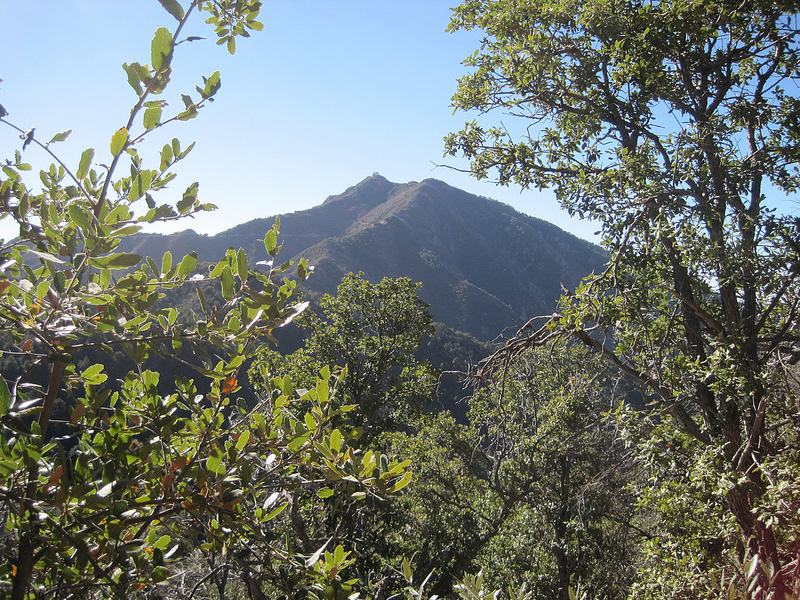
The new clinical 3 Tesla Skyra is being installed at the medical center... very exciting!
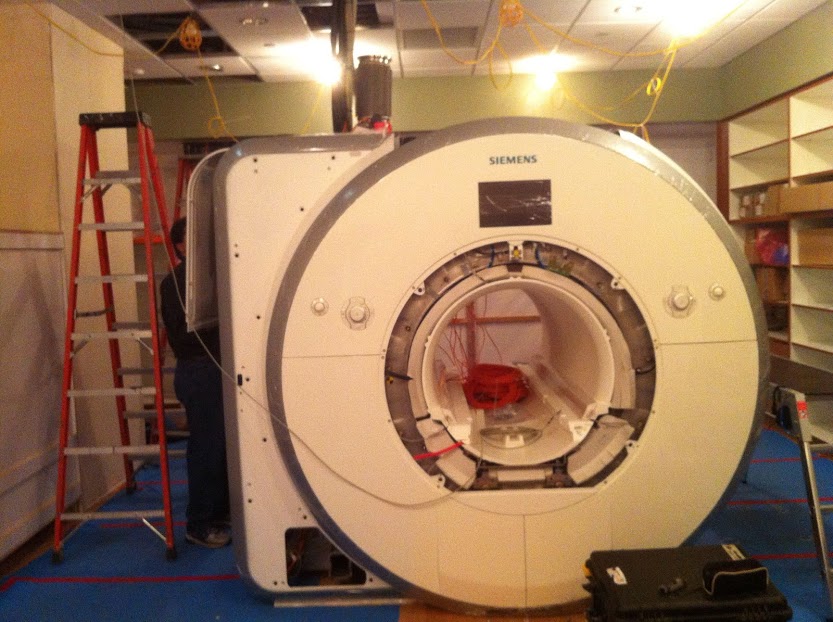

I've just uploaded a new version of VLSM: version 2.4 to the Resources page. The main development is that an extra text file (roi.txt) with subject-by-subject lesion data for each cluster is now included in the output directory, to facilitate post-hoc analyses such as multiple regression.
It may not look like much, but this is the new research MRI facility at the University of Arizona. The walkway was just poured today! Construction is on track for the new Siemens 3T Skyra scanner to be up and runnning in early 2013...

After Borna's Neurology grand rounds presentation...


Our "Cognitive Neuroscience of Language" class ran an experiment using noise vocoded speech to look at the neural correlates of language intelligibility and effortful speech recognition. Kat "Nico" Carbonell came up with the idea for the study, and Andrew DeMarco prepared the psychtoolbox script. Julia Fisher (pictured below) provided the brain.

Ashley Chavez and Lisa Wilson have been accepted to top masters programs in Speech-Language Pathology. Matt Stib has been accepted to a top medical school. Congratulations to all!
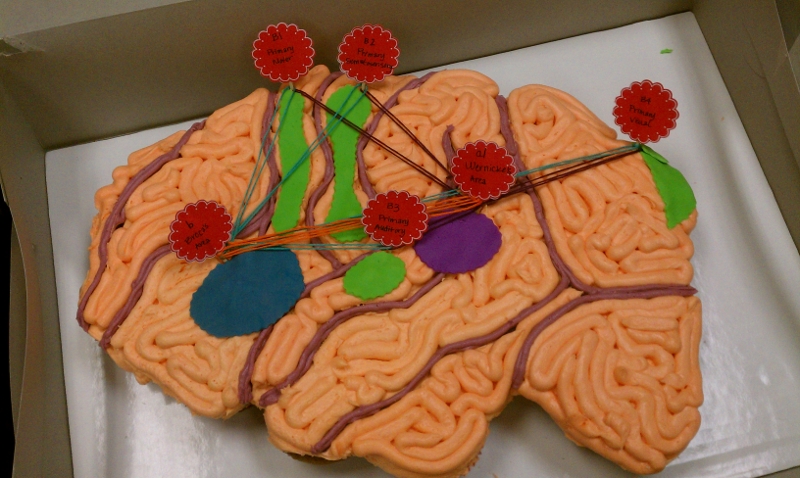
Janette McGuire created this delicious and anatomically accurate depiction of the Wernicke-Lichtheim model.
Our proposal has been funded by the Western Alliance to Expand Student Opportunities (WAESO). Congratulations Ashley.